1lumen selects and reviews products personally. We may earn affiliate commissions through our links, which help support our testing.
Weltool W2 review: SMD LEP flashlight
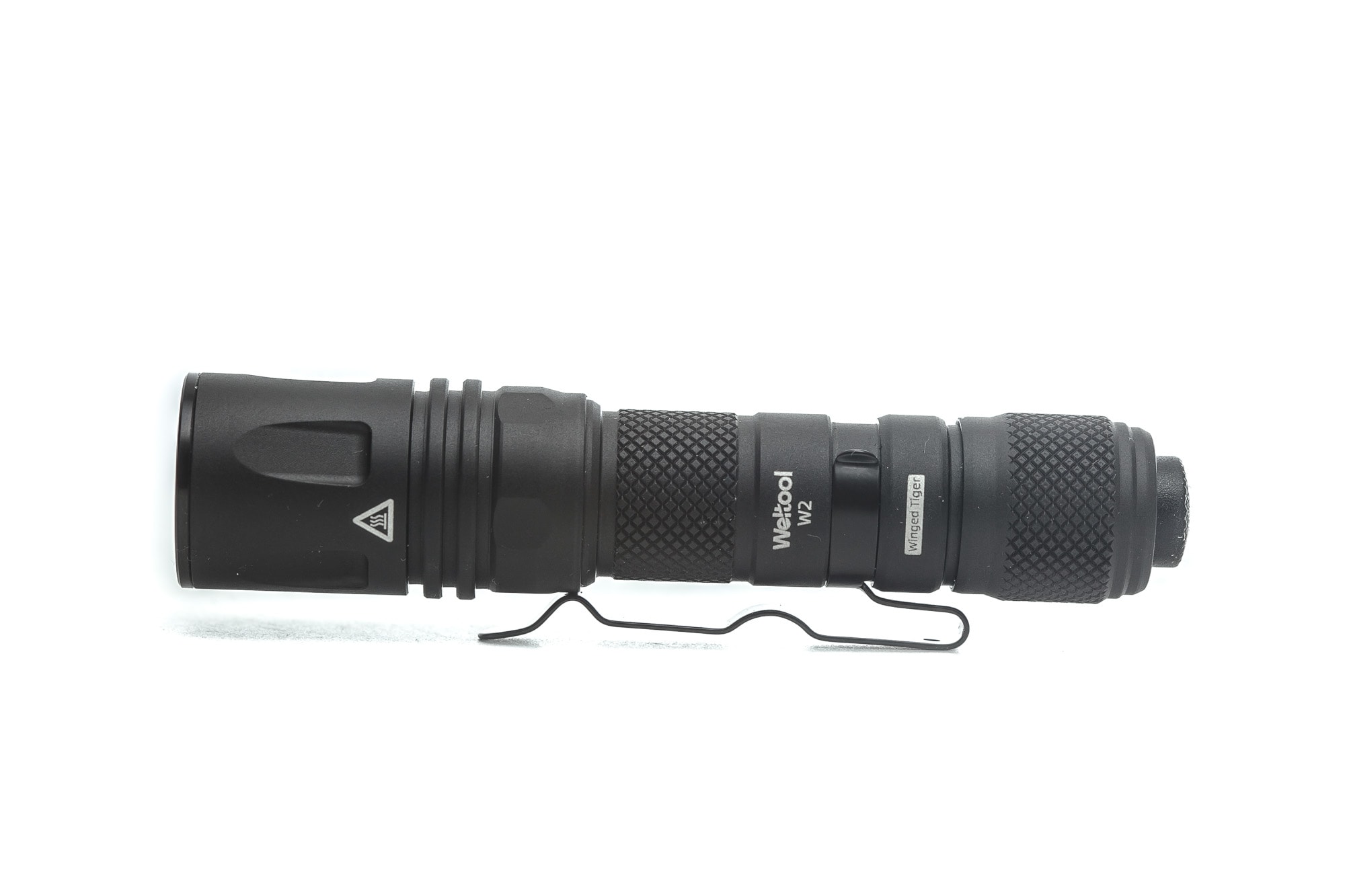
Weltool W2 specifications
| Brand/model | Weltool W2 |
|---|---|
| Flashlight category | LEP flashlight |
| LEP | SLD SMD LEP |
| Max. output | 280 Lumens |
| Max. beam distance | 800 meters |
| Max. beam intensity | 160,000 cd |
| Battery config. | 1*14500 (not working with AA) |
| Onboard charging | N/A |
| Modes | 1 |
| Blinkies | N/A |
| Waterproof | IP67 |
| Review date | February 2024 |
Review intro:
In the Weltool W2 we have something pretty unique, entering a new era of flashlight technology. Is this going to take over the world of flashlights?
The Weltool W2 we have here in front of us, is not your average flashlight. First of all, it’s not an LED flashlight, and secondly, it’s not even a normal LEP flashlight.
This is the first SMD LEP flashlight available worldwide. It does not use traditional LEP modules but utilizes an SMD laser chip, which is still in its infancy. As far as I know, Kyocera is the only company producing these chips. Edit: Weltool told me they got this one from a Chinese company.
I can’t wait to see how this new technology is working out, so let’s dive in.
What’s in the package
The packaging is quite interesting since it lacks any information about the flashlight inside. Perhaps because of the SMD LEP? This is what’s inside:
- Weltool W2
- Weltool INR14-06P 14500 battery
- Weltool MC1S charger + charging cable
- O-ring
- Manual and quality certificate
ps. Don’t forget to remove the plastic insulator in the tailcap before your first use.
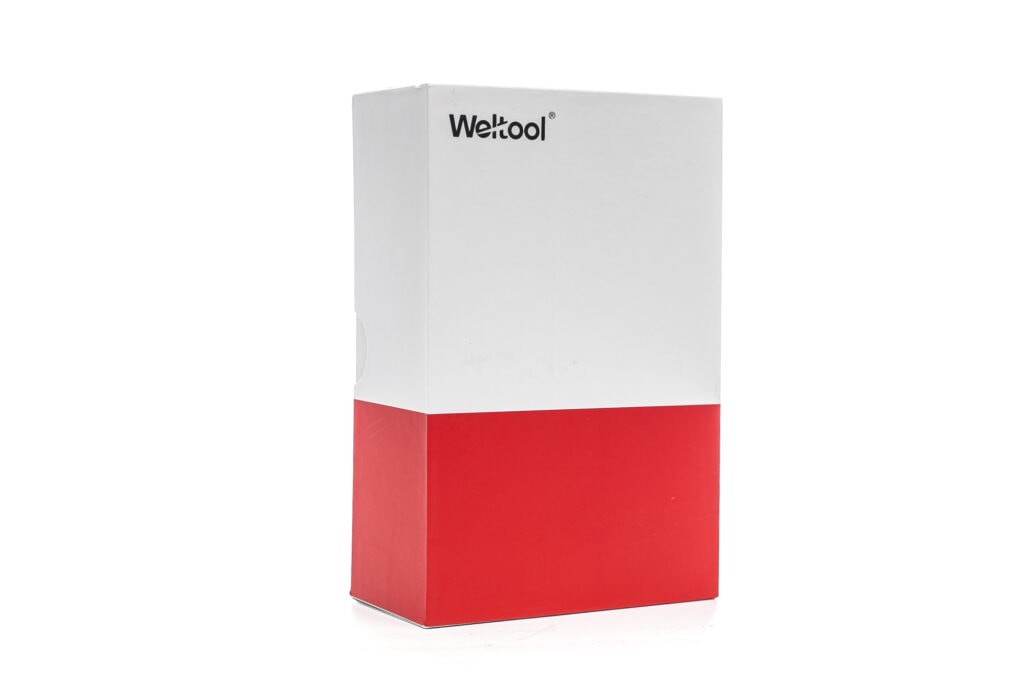
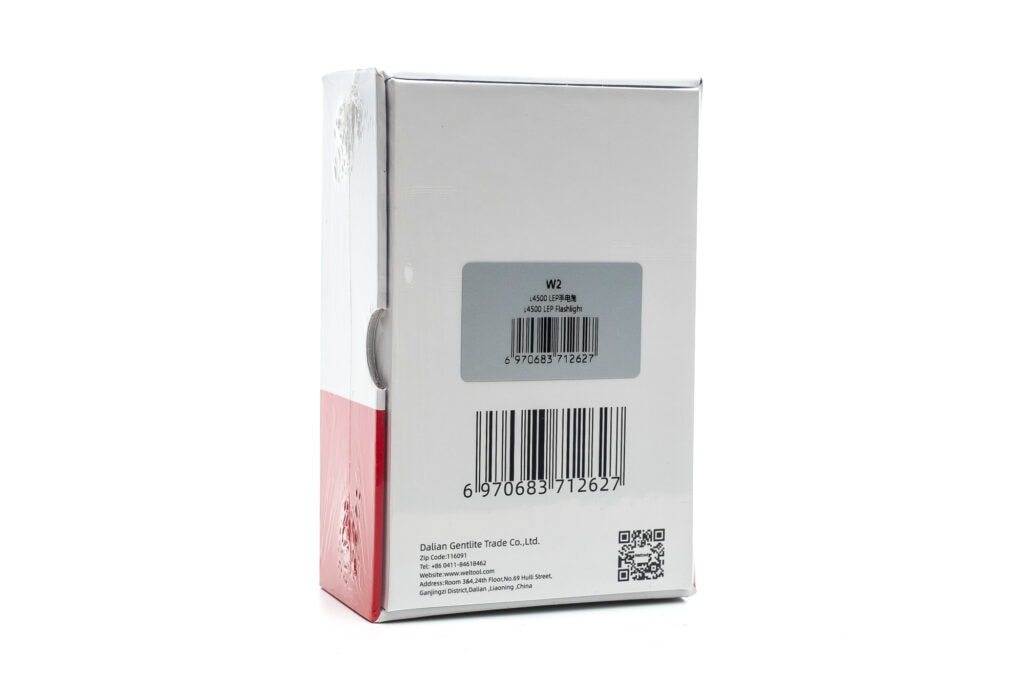
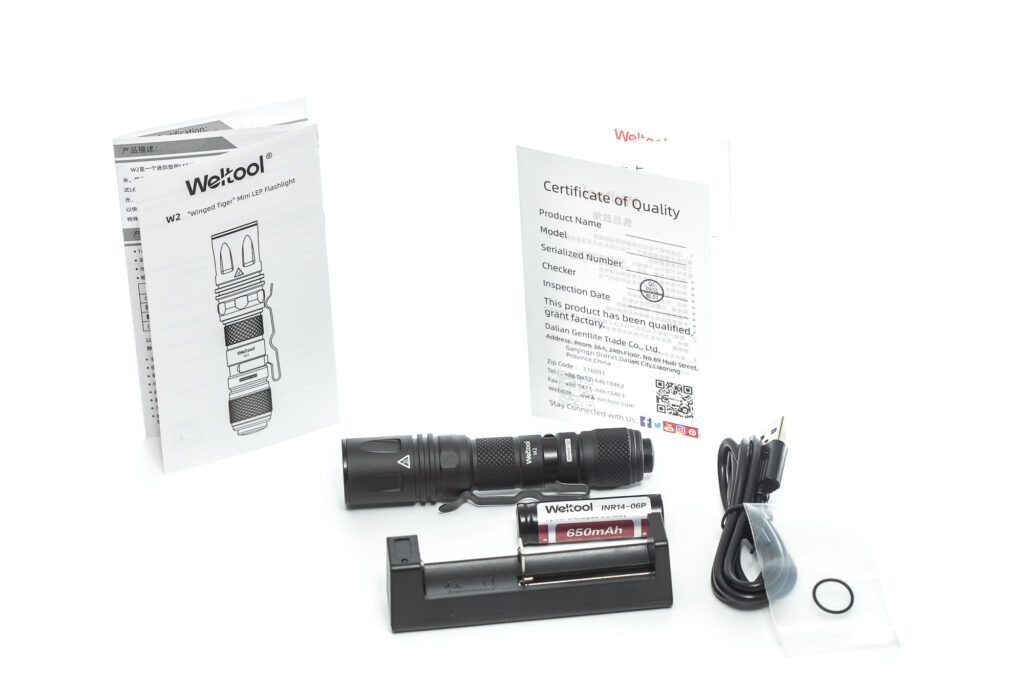
Flashlight in use, Build Quality, and Warranty
In my opening statement, I mentioned that this is the first SMD LEP flashlight available worldwide, and this still holds true. However, there is another SMD LEP flashlight on the market, which is the Bushnell AT 1.1, but it is only available in the USA (besides the Kyocera branded flashlight). That was the first official SLD SMD LEP-based flashlight that used a Kyocera SLD SMD chip. I found one on eBay in 2022 or 2023, and purchased it. But unfortunately, it was confiscated by customs in the USA, before it even left the country, possibly due to the word “LASER” being mentioned on the parcel. This was a real shame!
Anyway, let’s get back to today’s topic. The Weltool W2 is built very well for such a small flashlight, but that was to be expected from Weltool. All my Weltool flashlights are built great, and I never really had any real issues.
The W2 flashlight is powered by a single 14500 battery, making its body slim and short. It fits perfectly with normal AA-sized EDC flashlights. The W2 is not as short as the Lumintop Ant Man, which is also an AA-sized LEP flashlight, but it comes pretty close.
Regarding handling, the W2 looks and feels like a small tactical flashlight with a rear forward-clicky switch. A forward clicky switch turns the flashlight momentarily on with a half press. If you do a full click, the flashlight will stay on continuously. If you want to use it with one hand, it is better to hold it in an overhand position and rest your thumb on the switch.
And since it’s basically a single-mode flashlight, you can’t extend its runtime, which is advertised as being 42 minutes long. That’s pretty short, so you better have some backup batteries. A triple tap will give you access to a strobe mode, though.
Because of its size, it can easily be carried in your pocket, or you can use the pocket clip to give you a bit quicker access to it. The pocket clip can be removed, but it will also remove the possibility of carrying it with a lanyard because it attaches to the clip.
When you ask me what use cases I could think of for this little LEP flashlight, I would probably say as a backup thrower or a beacon, aka location finder.
The tailcap is the only removable part of the flashlight. The body is glued to the head, but the bezel can also be removed with some help. This will give you access to the SMD LEP chip, as seen in one of the following sections in this review.
Weltool’s warranty, according to their website:
From the date of sale (the serial number on the Lights body can show the date), the limited warranty for LED products is 5 years, and the warranty for LEP products is 2 years.
The above free warranty does not cover any damages or failure caused by:
- Problems caused by alteration, misuse, abuse, or unreasonable
- Battery leakage , improper operation or using poor quality battery
- The products do not purchase from Weltool directly or its authorized dealers or other illegal way
- Broken lens caused by external force
- Lamp, switch runs out of its lifespan
- rubber cap, O ring’s naturally aging
- normal wear and tea, imprinting, or color finishes
- Other problems caused by improper operation
- Discontinued products
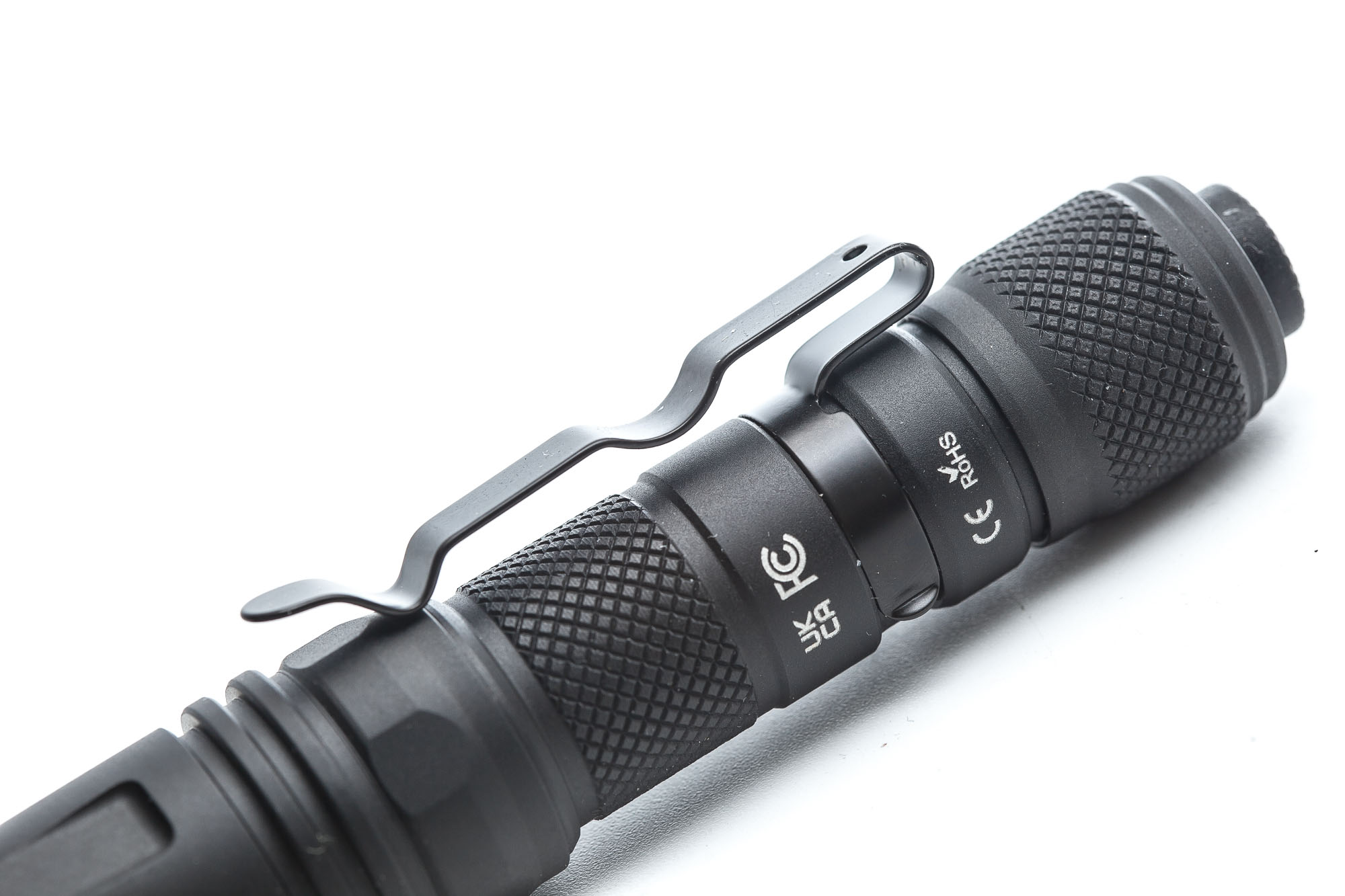
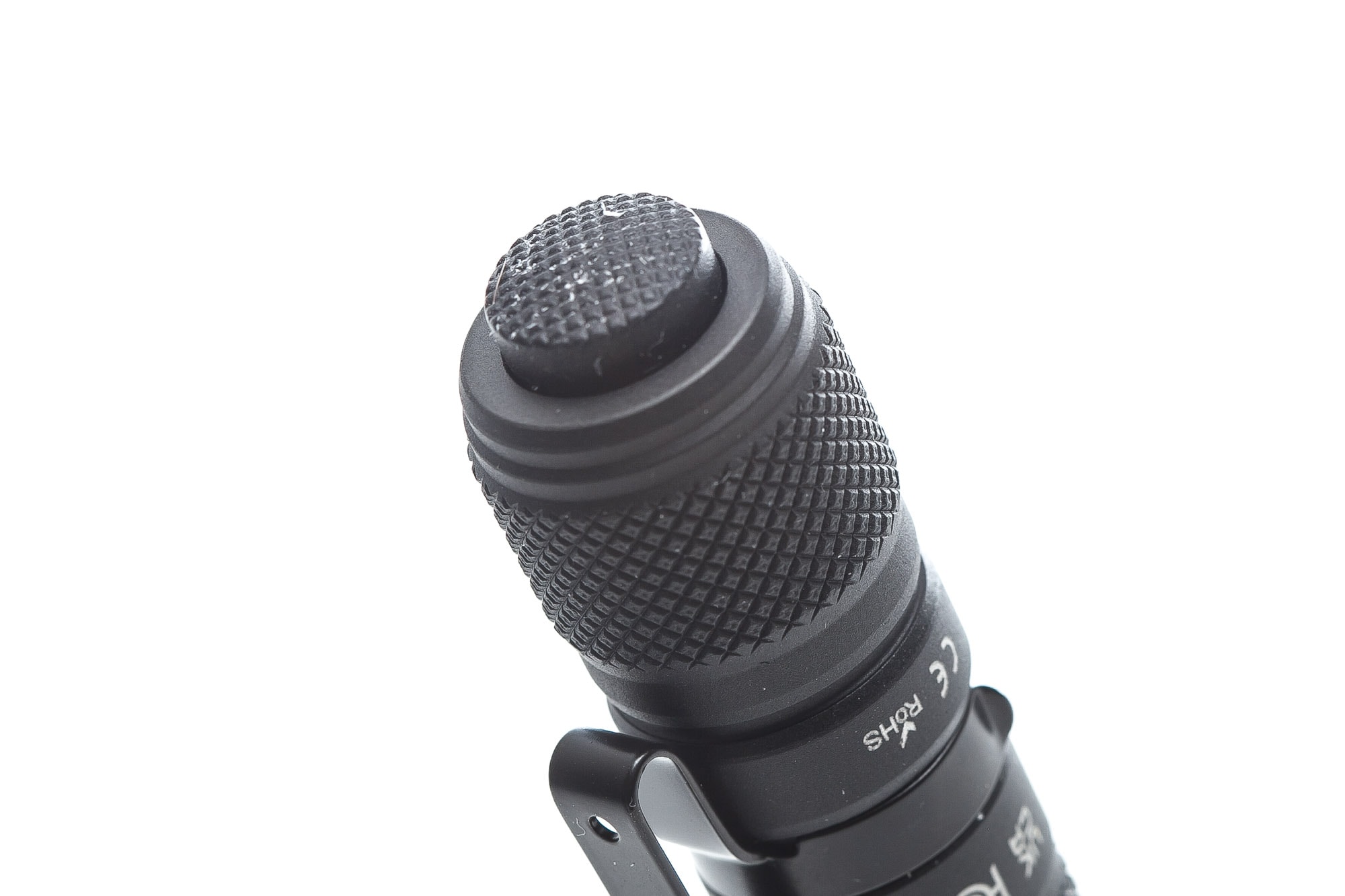
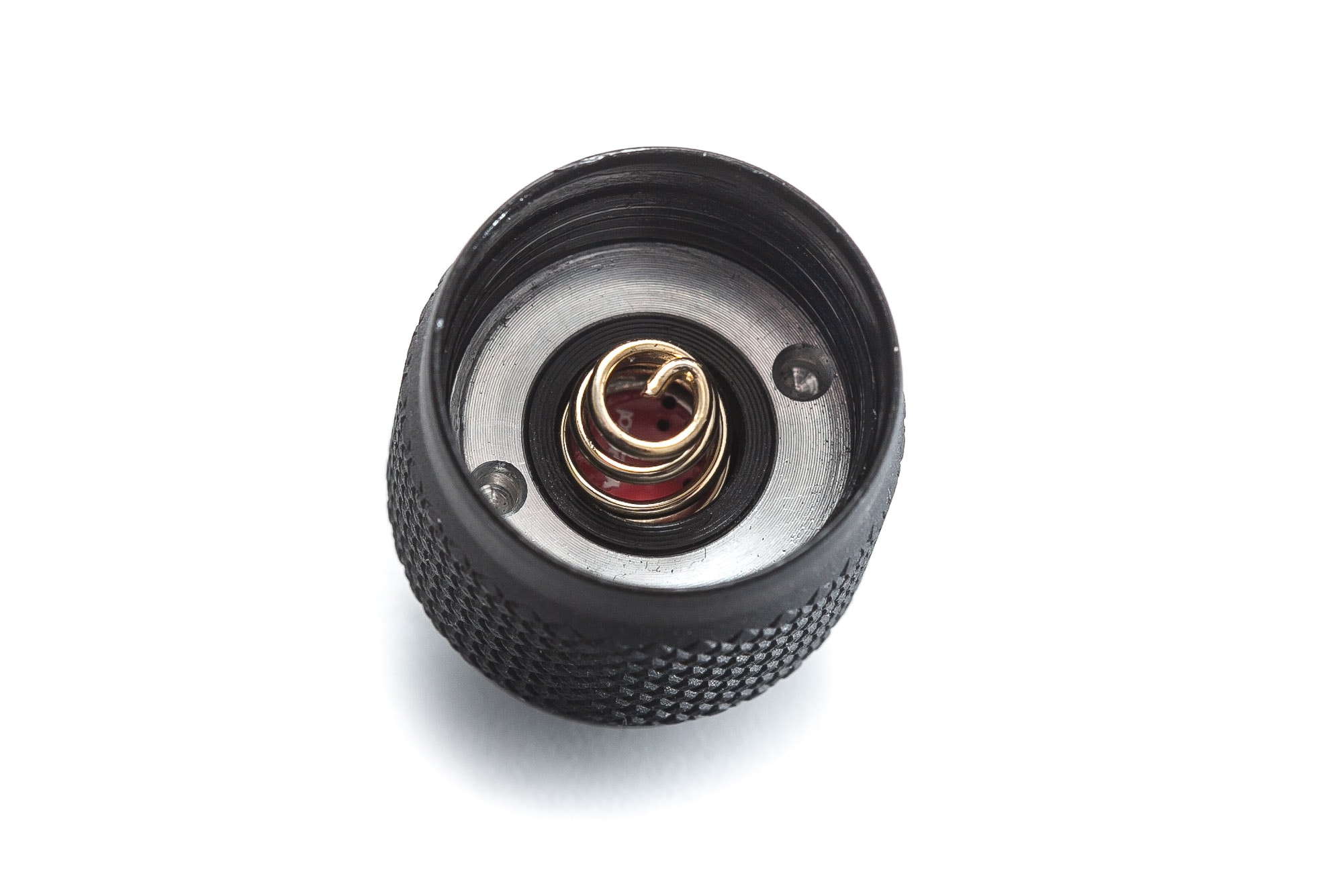
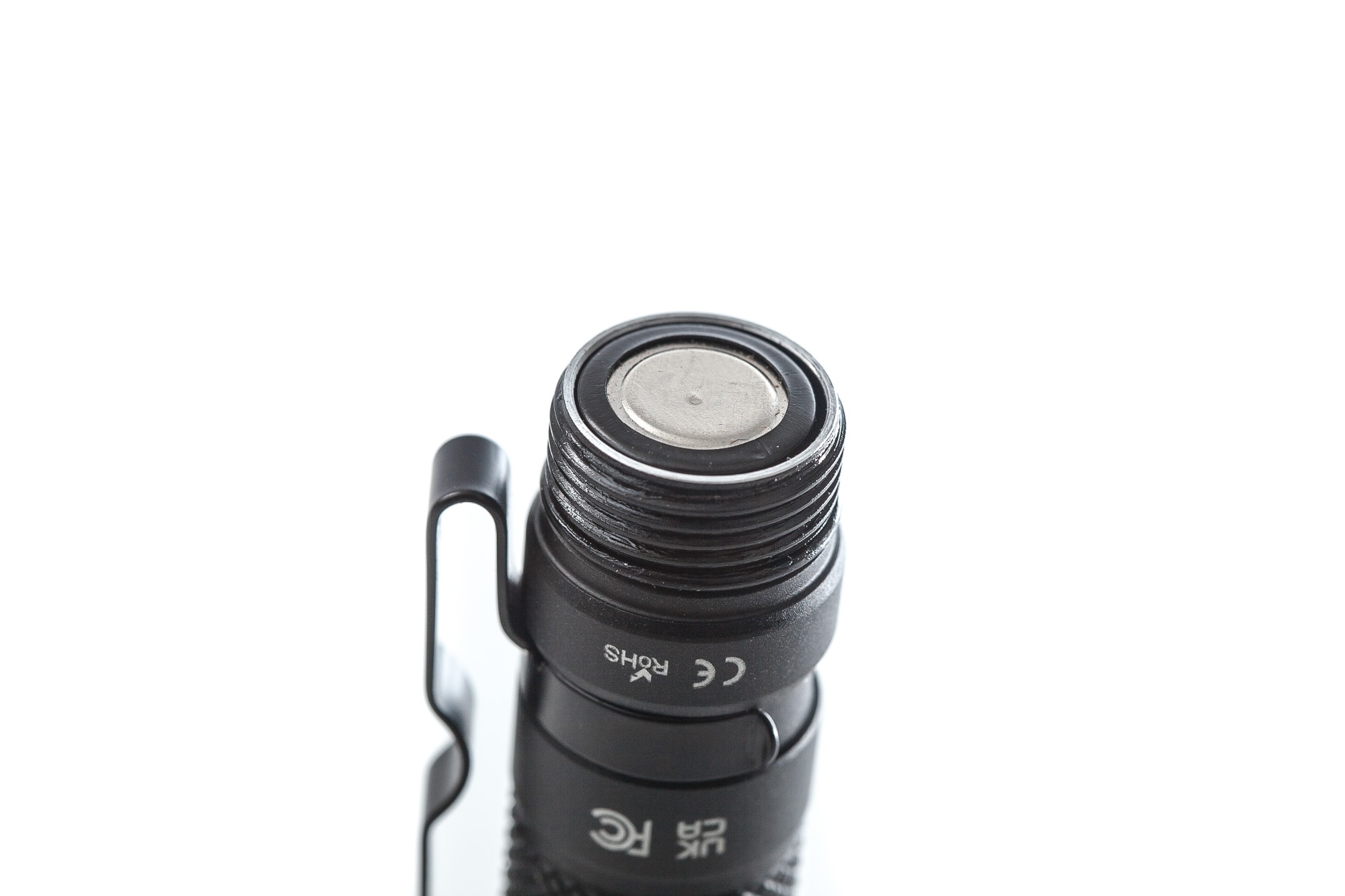
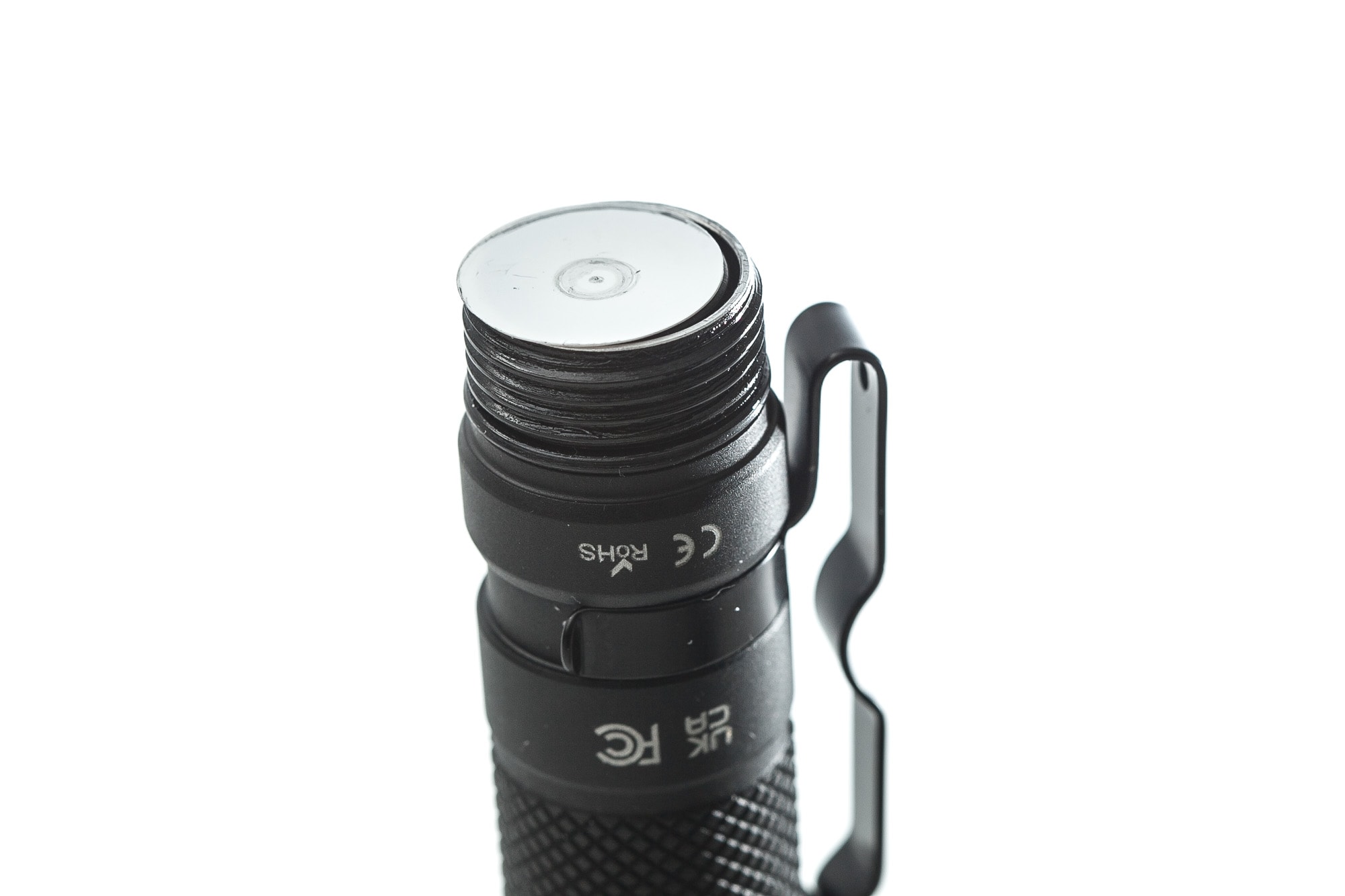
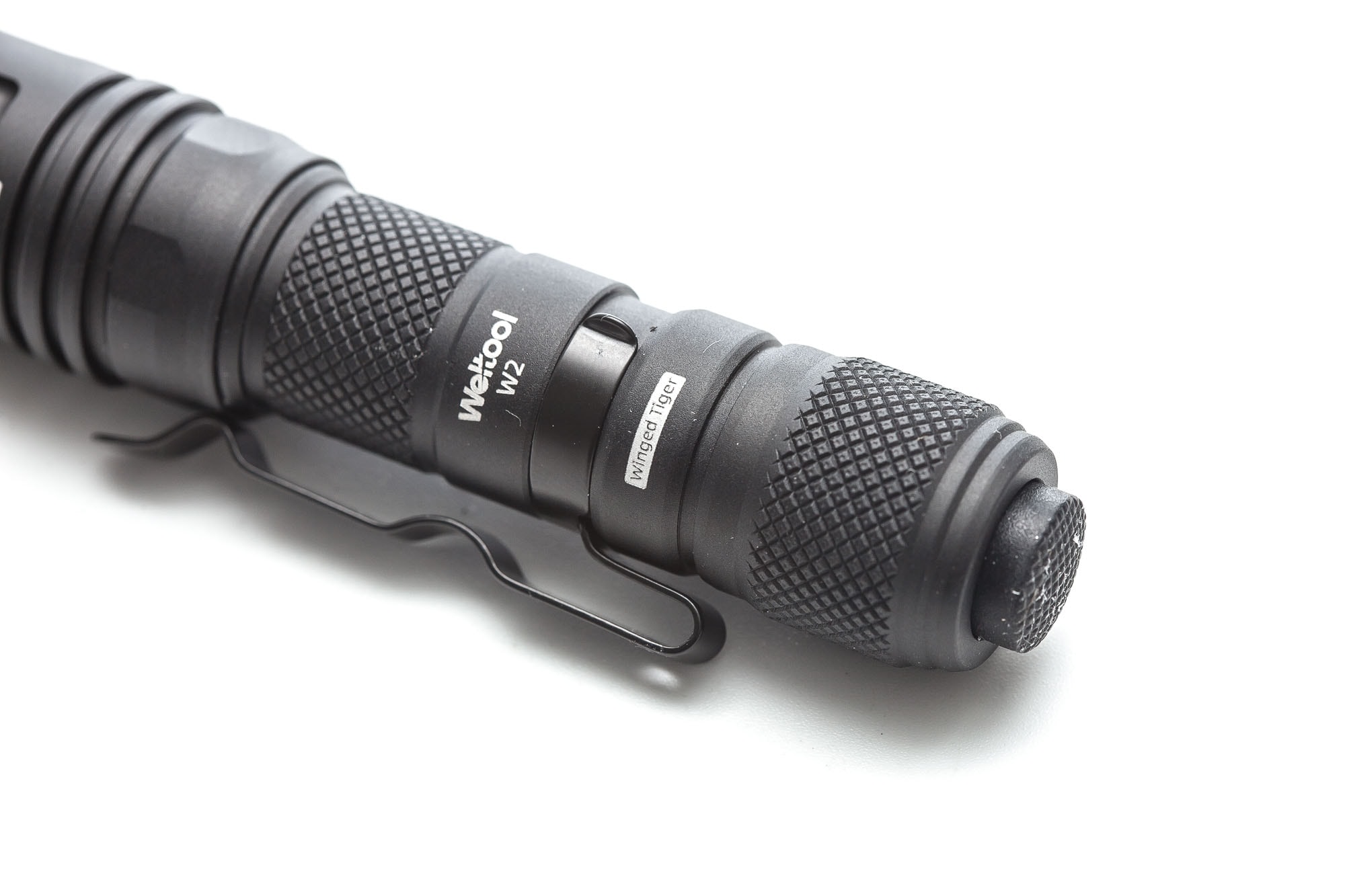
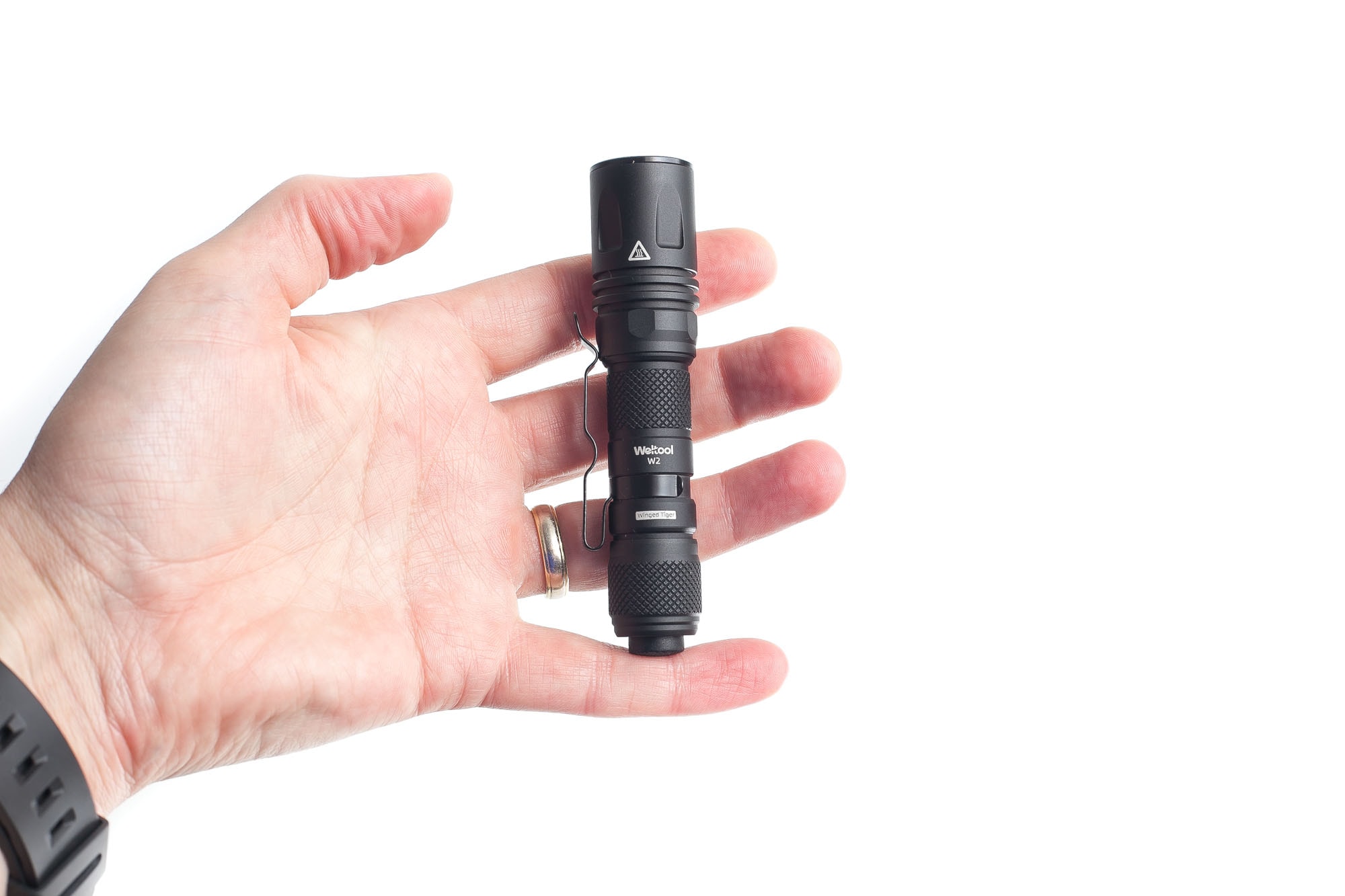
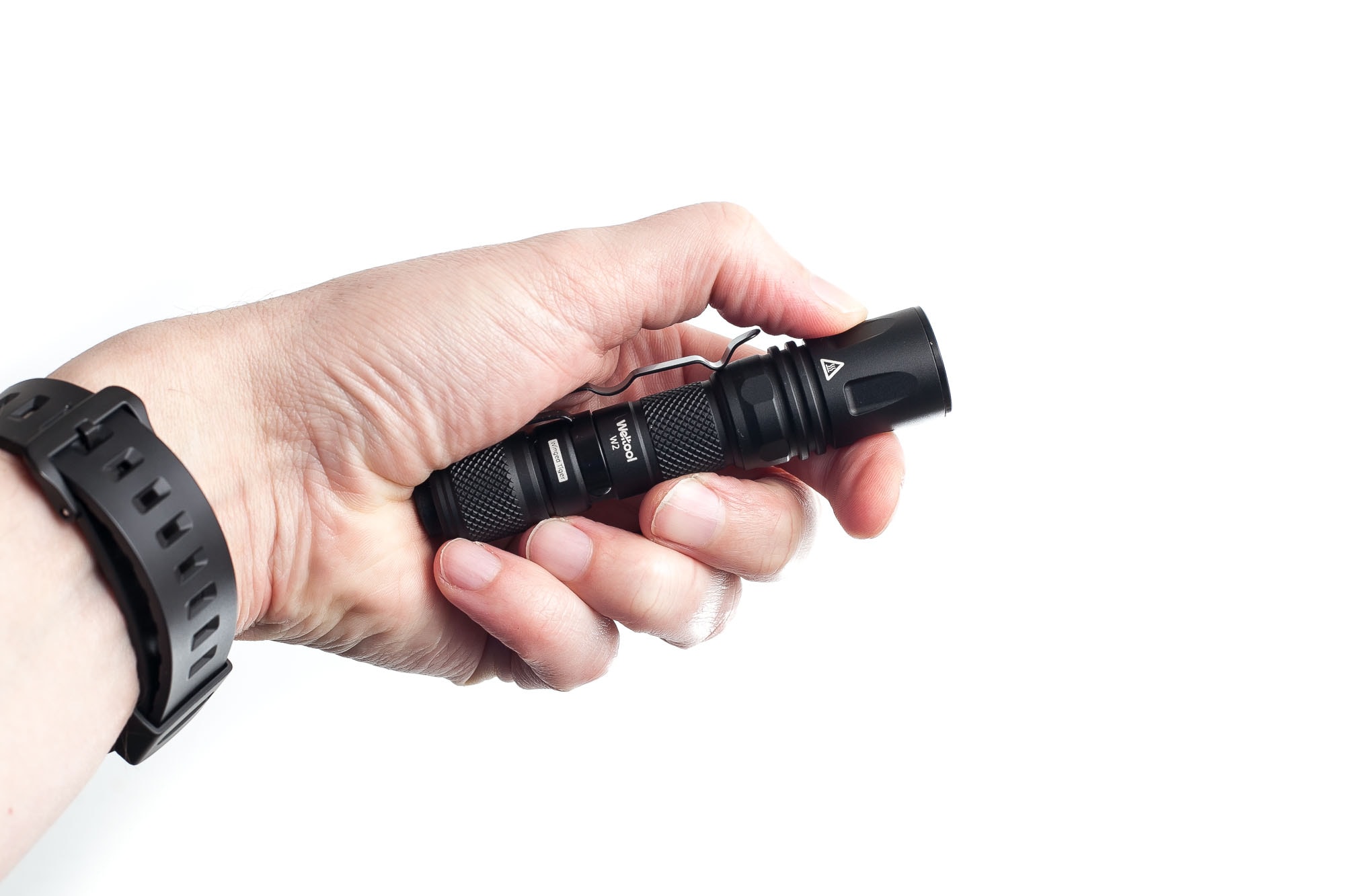
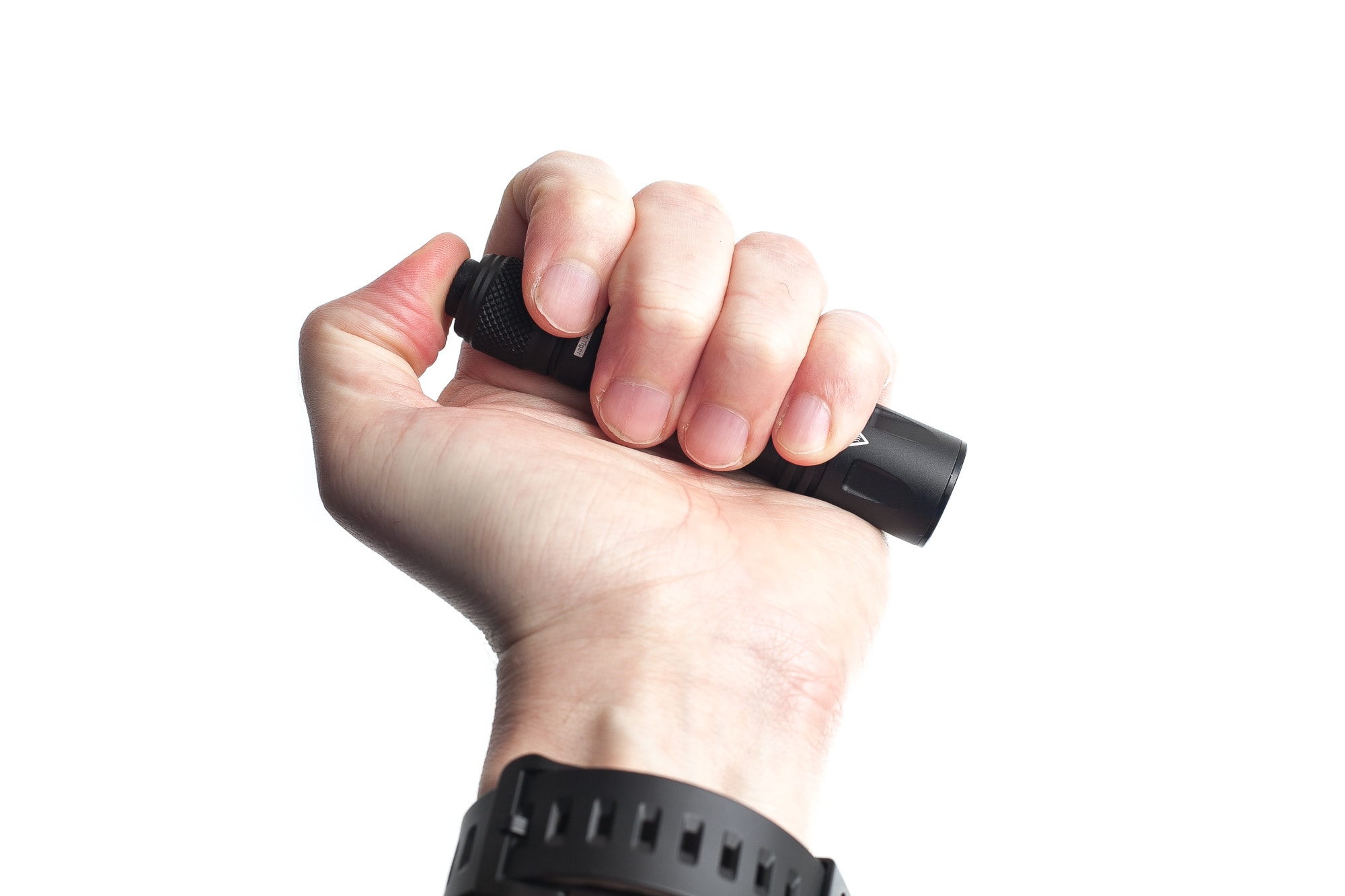
LEP, Lens, Bezel, Beam, and Reflector
It’s quite exciting to see Weltool implementing this new SMD LEP technology. And that’s not a surprise, because they were also one of the first companies to implement LEP technology in flashlights. And they have produced some of the best LEP flashlights in class!
Weltool has been one of the few companies to adapt so quickly to new flashlight technologies.
It started with the W3, Weltool’s first LEP flashlight, back in 2017. That’s only seven years ago, and here we are, reviewing the newest LEP technology. But that comes at a cost, because the average price of these is around 200USD per unit.
And with all new technologies, it will take some time to improve.
The biggest difference is the lack of any LEP module! Instead, it has a ‘normal looking’ MCPCB with a SMD chip. And yes, this is one of the first SMD LEP flashlights on the planet.
However, the beam is not as good as an LED flashlight, with a pretty green spill and a relatively purple/blue center. The center color looks a bit like UV, and that’s possibly still something they can improve in the future. But LEP flashlights are not made for tint snobs, so if you are one of them, stay away from LEPs.
As I mentioned earlier, the bezel can be removed. Removing the bezel gives you access to the MCPCB with SMD LEP, in case you want to have a look. I would warn you that this may void the warranty!
The convex lens is not protected, so you better be a bit more careful not damaging the front (convex) lens.
But it’s relatively deep inside the head, so hard to reach. I would suggest finding a way to remove the battery tube, and unsolder the wires from the driver instead of trying to unsolder the wires from the front.
Spectral measurements:
I usually don’t take any spectral measurements with LEP flashlights.
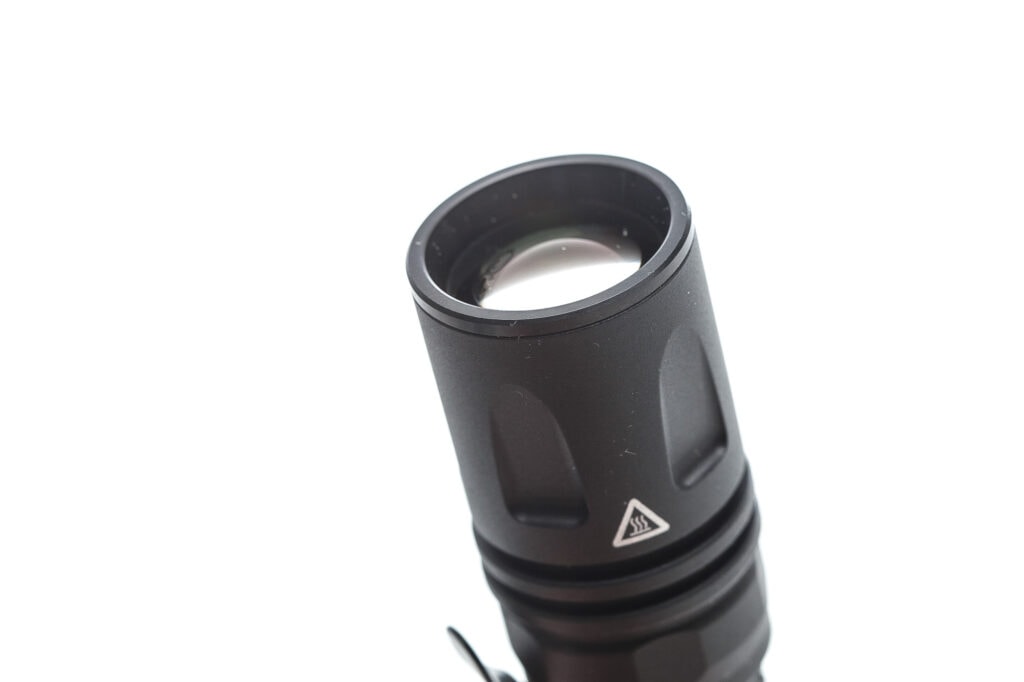
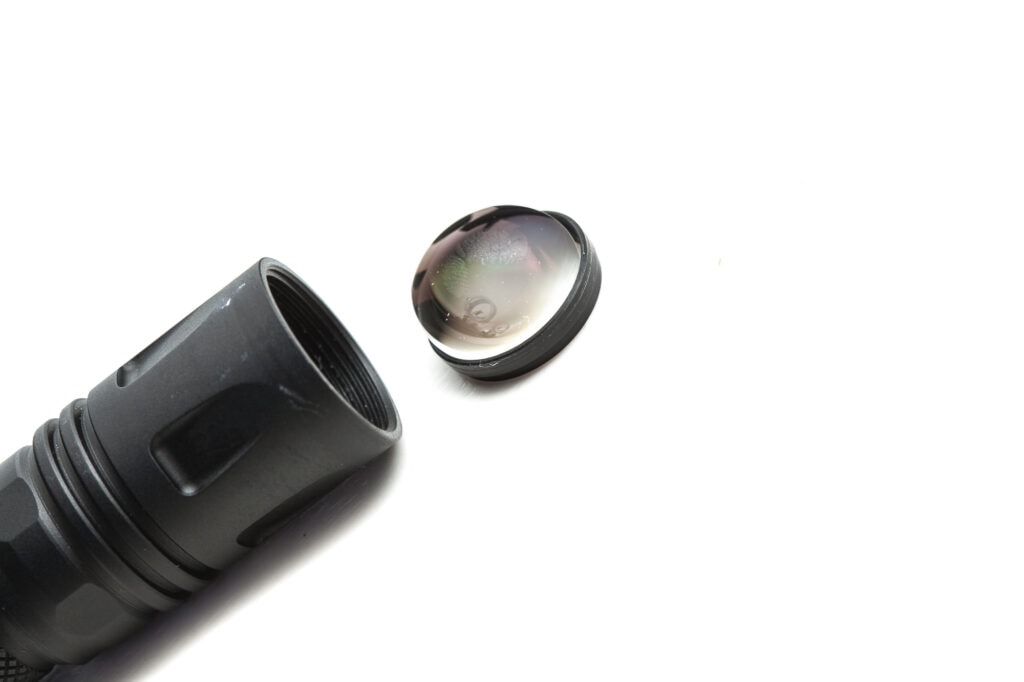
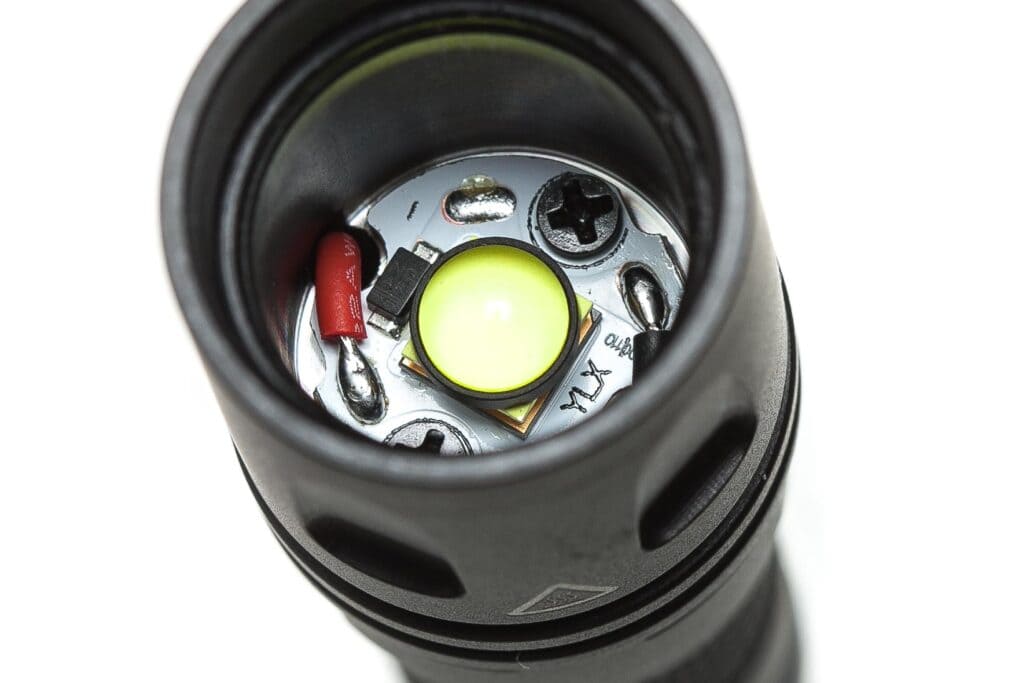
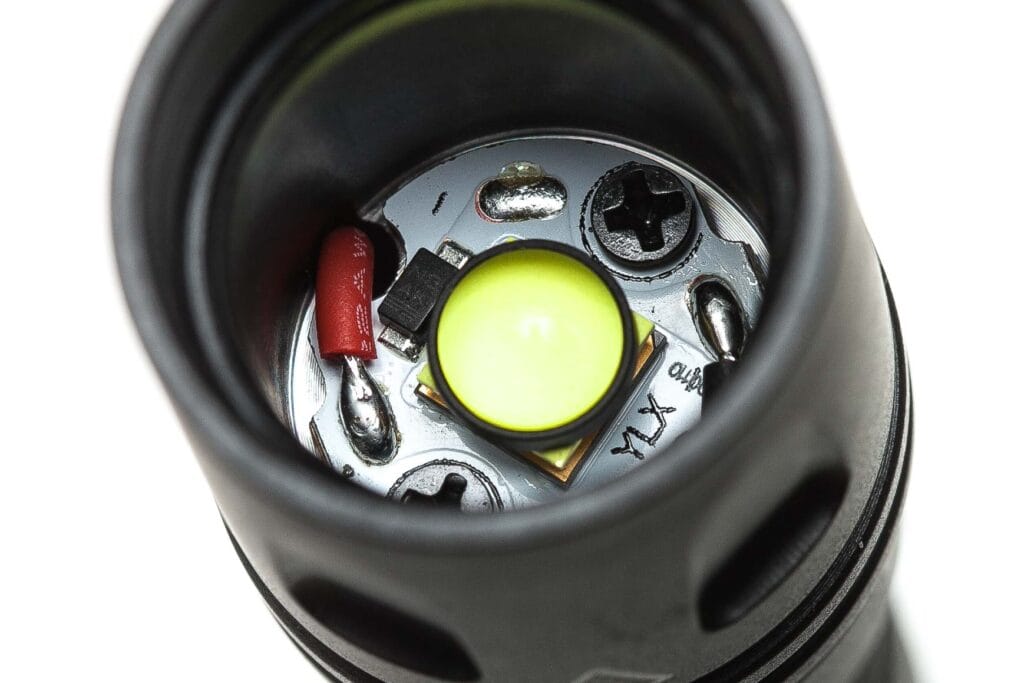
Dimensions and its competition
Dimensions:
| Weltool W2 | Millimeters | Inches |
|---|---|---|
| Length | 107 mm | 4.2 in |
| Head diameter | 23 mm | 0.9 in |
| TaIlcap | 20 mm | 0.8 in |
| Body diameter | 18 mm | 0.7 in |
Dimensions are rounded to the nearest millimeter and the nearest tenth of an Inch.
Weight:
| Weltool W2 | Weight in grams | Weight in oz. |
|---|---|---|
| Without battery: | 53.1 g | 1.9 oz |
| With battery | 72.7 g | 2.6 oz |
Weight is rounded to the nearest gram and tenth of an Oz.
Weltool W2 Flashlight comparison
Group 1, from left to right: Weltool flashlights: Weltool T11, Weltool W3 Pro Tac, Weltool W3 Pro, Weltool T12, Weltool W2, Weltool T1 Pro
Size compared to other LEP flashlights
Group 2, from left to right: AA-sized flashlight: Lumintop Ant Man, Weltool W2
Group 3, small LEP flashlights: Lumintop Thor 2 v1, Lumintop Petal, Lumintop Thor 1, Lumintop Thor Mini, Lumintop Ant Man, Weltool W2
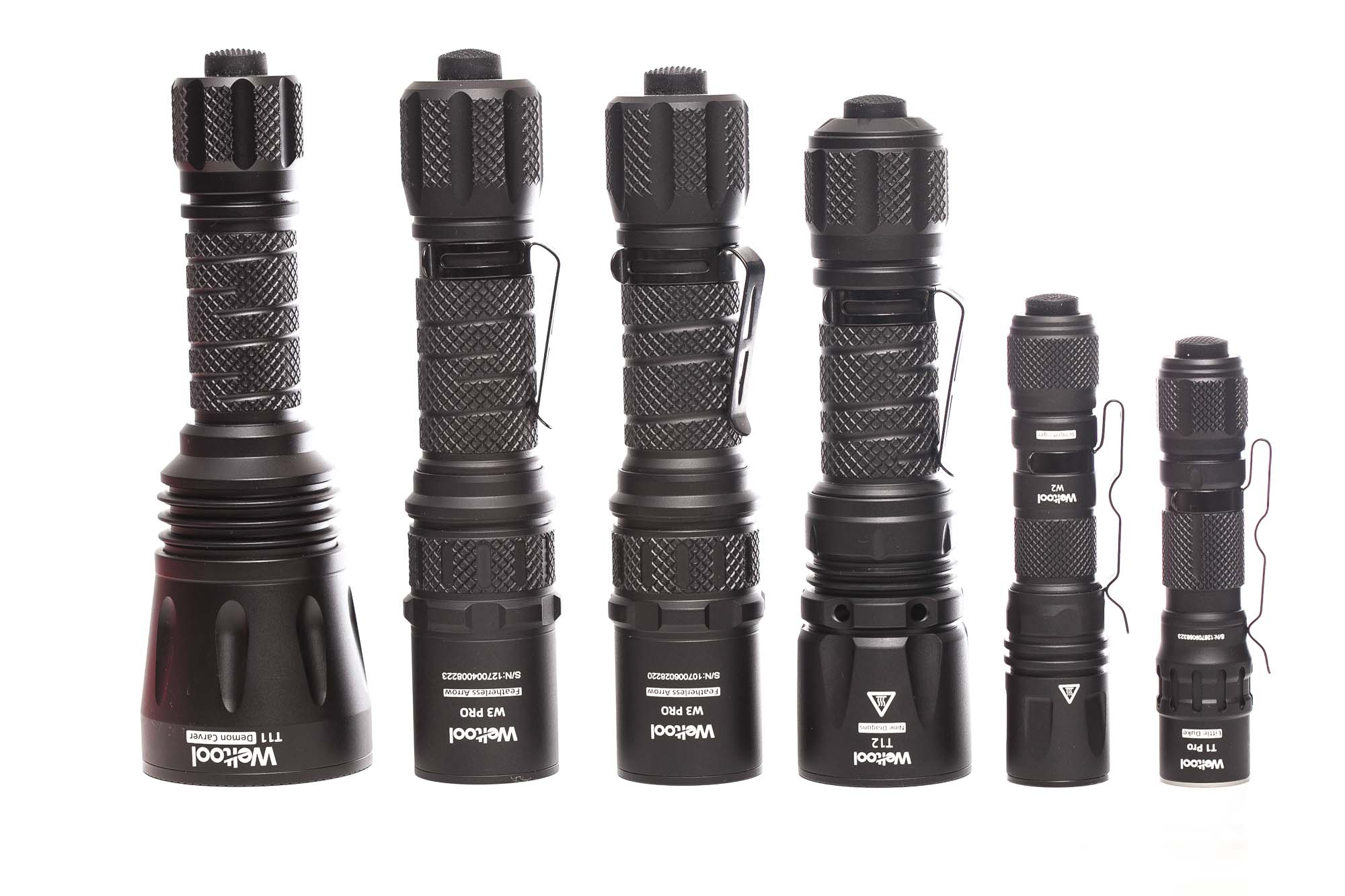
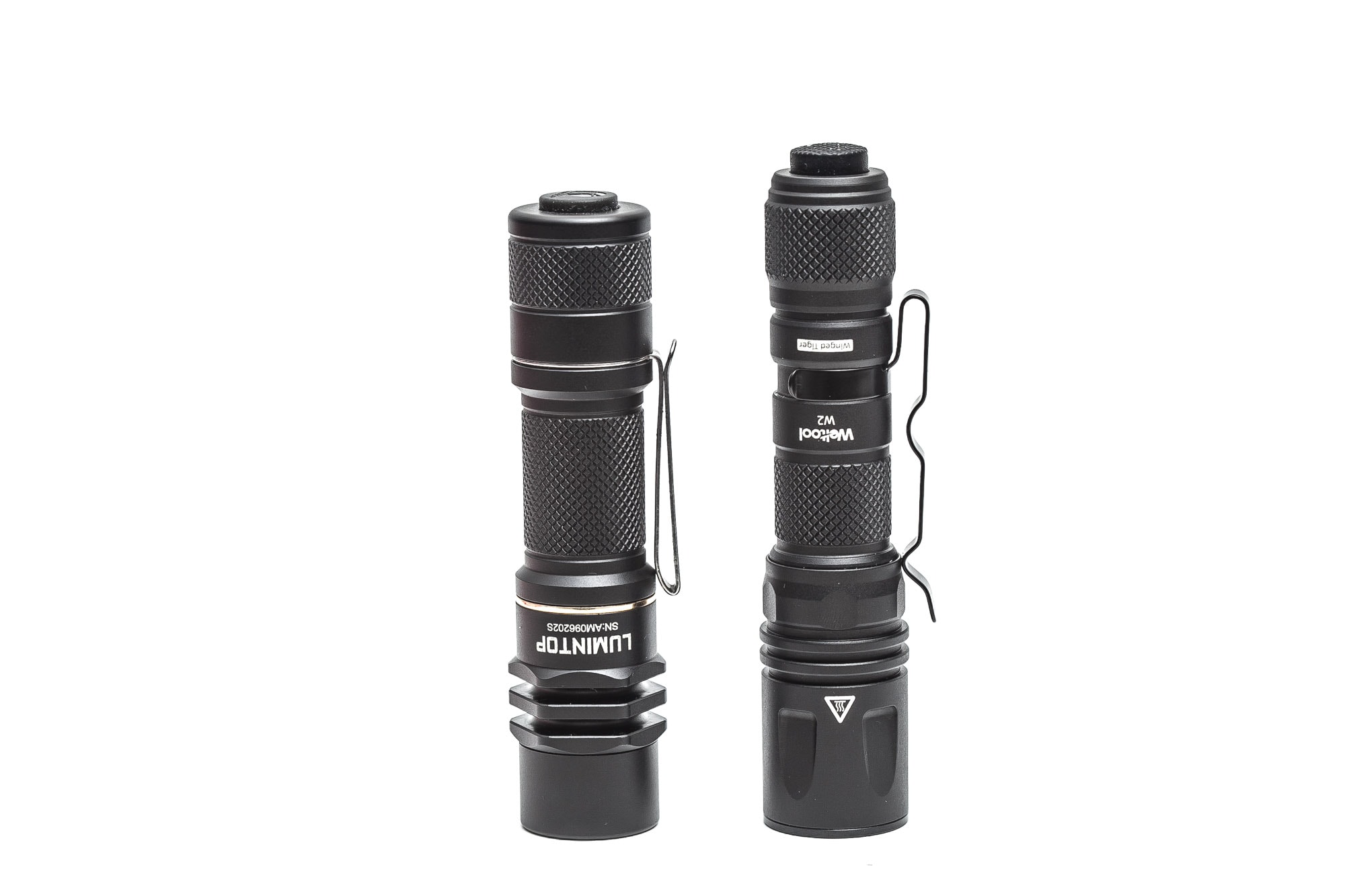
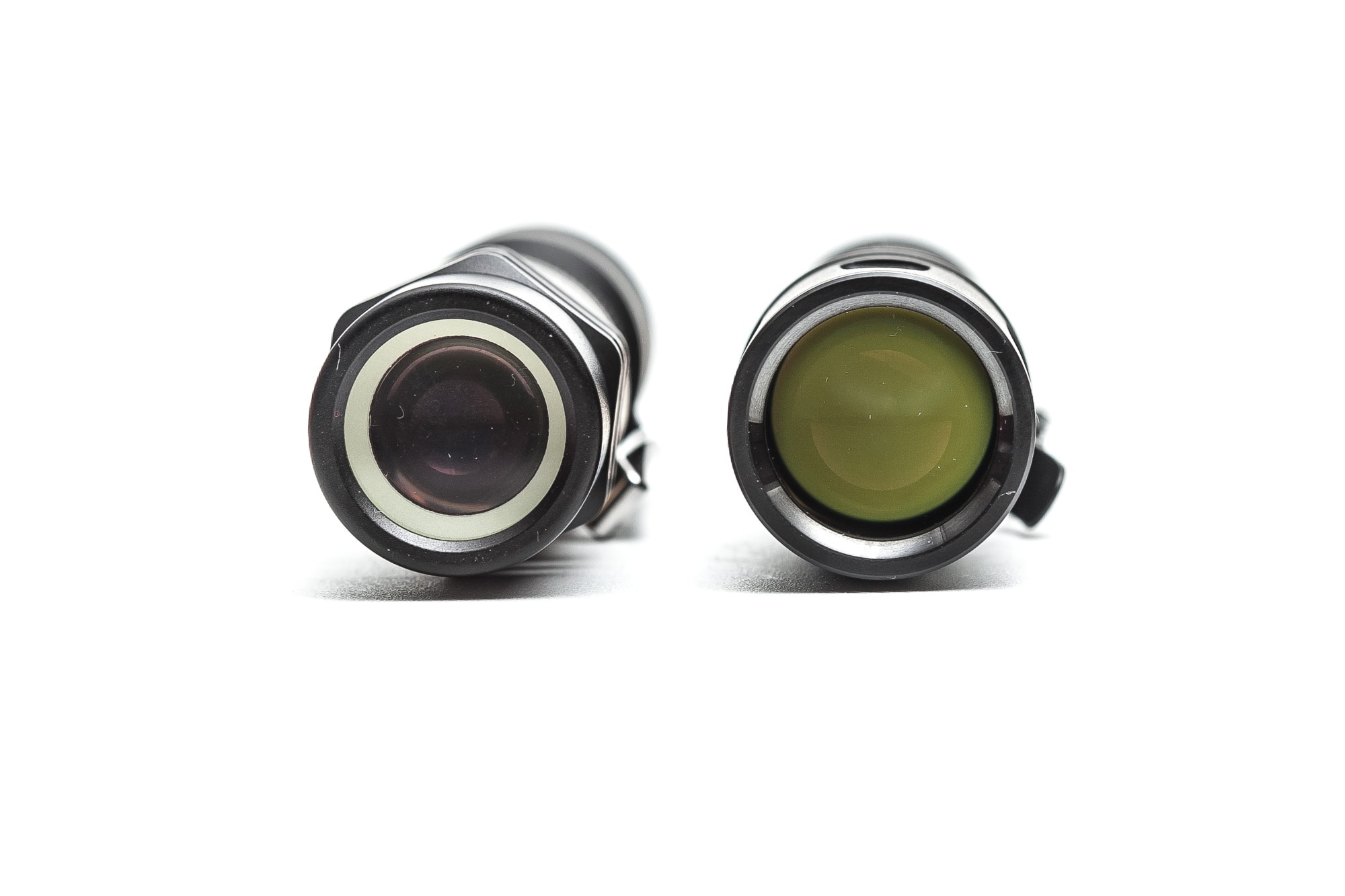
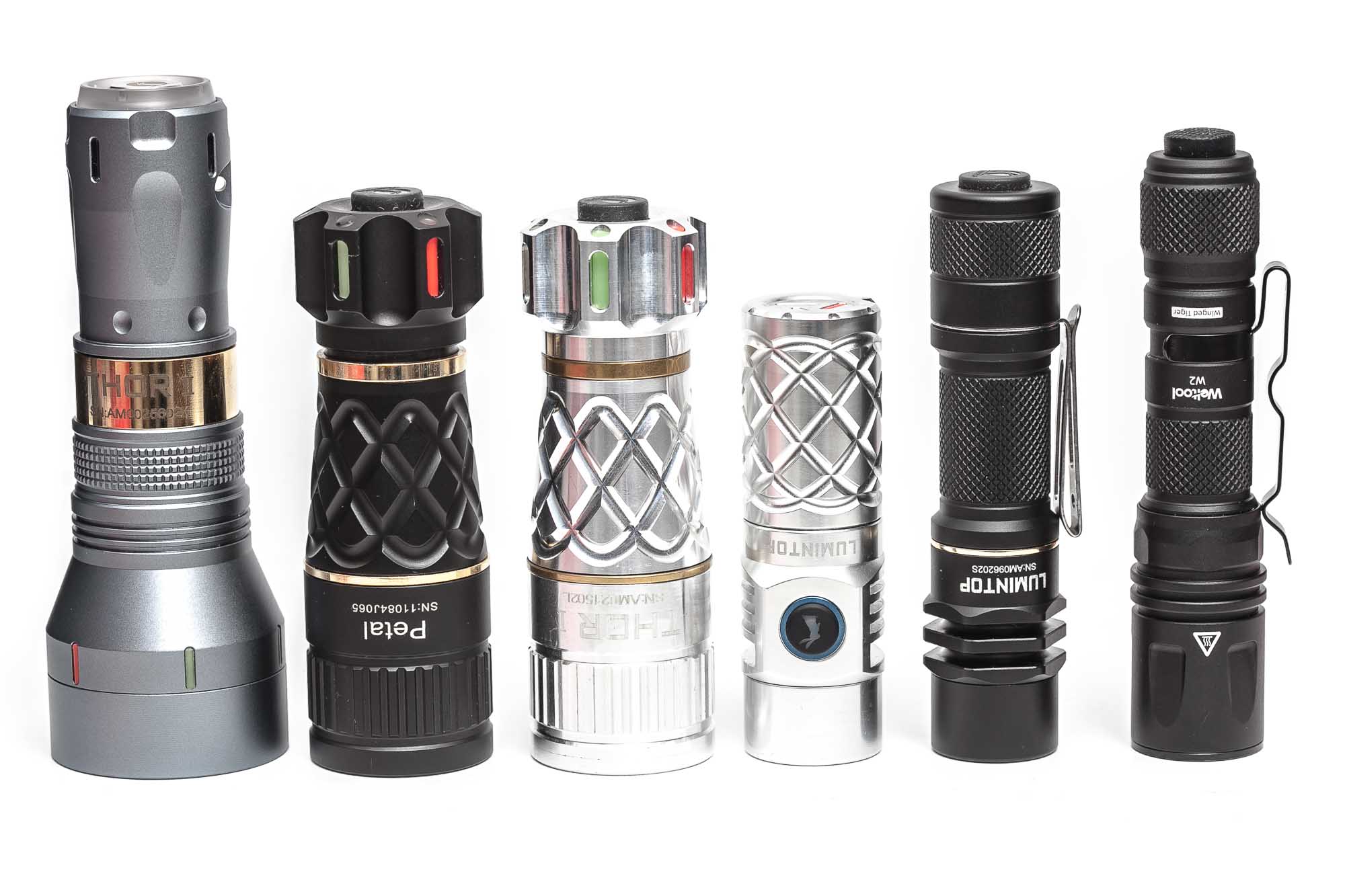
Weltool W2 UI : User interface and driver
The UI is pretty straight forward
The available main modes:
- High
The available special modes (blinkies):
- Strobe
How the UI works when the flashlight is still turned OFF:
- Half-press: high, momentary
- Single-click: high, continuous
- Triple-tap: strobe momentary
- Triple tap and click: strobe continous
How the UI works when the flashlight is turned ON:
- Single-click: turns off
Shortcuts within the UI:
- To Strobe: triple tap
Mode memory:
- There is only 1 mode
Blinky modes:
- Strobe. Can be accessed by a triple tap.
Low battery warning:
- Quick flashing few seconds before turning off. So not very helpful as a warning.
Lock-out mode:
- None
PWM:
- Not that I can see
Firmware / UI Conclusion:
- This is one of the easiest UIs out there :–)
Weltool W2 Charging and batteries
Inside the package, you can find the Weltool MC1S single-bay charger. They also added a Weltool INR14-06P battery, a 14500-type lithion-ion battery with a 650mAh capacity. It arrived with a resting voltage of 3.8V. The wrapper also mentions: High Drain 6A Rechargeable Li-ion Battery. So I guess that means it’s a relatively high-drain battery.
The Weltool MC1s charger is a single-bay charger that accepts multiple kinds of batteries, including the following: 10440, 14500, 16340, 17335, 17500, 17670, 18350, 18500, 18650, 18700, 20700, 21700, 22650, 25500, 26650. It also mentions that it can not charge protected 21700 or 20700 batteries.
While charging the Weltool 14500, I used a USB tester and saw a charging Voltage of 5.1V and 0.9A charge current. This equals to about 4.7 watts, and for a 650mAh that is quite a bit. I wouldn’t mind a lower charge speed for this type of battery. For 18650, this would have been fine, though.
After the runtime, the battery was at 2.84V.
Even though the W2 is the size of an ordinary AA flashlight, it does not work on AA batteries. It will just blink a few times, and then turn off.
The charge time with the MC1S was 55 minutes, and the end voltage was a little high at 4.21V.
| Charge type | Fits | No fit | Charge time |
|---|---|---|---|
| Weltool MC1S Charger | many | protected 20700/21700 and longer | 55 minutes |
I’m not so sure about this charging speed. It almost feels like a bit too high for a 650mAh 14500 battery.
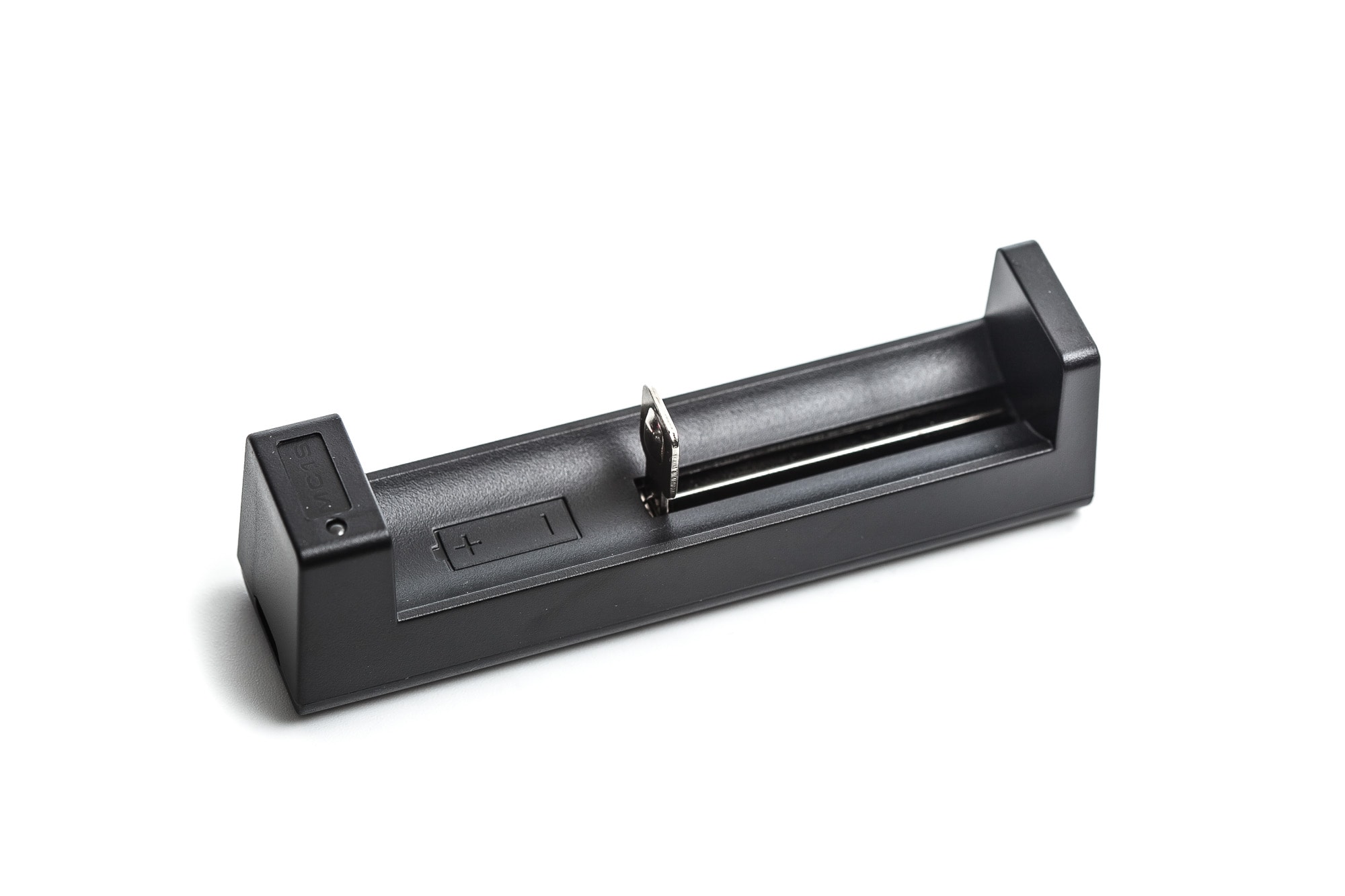
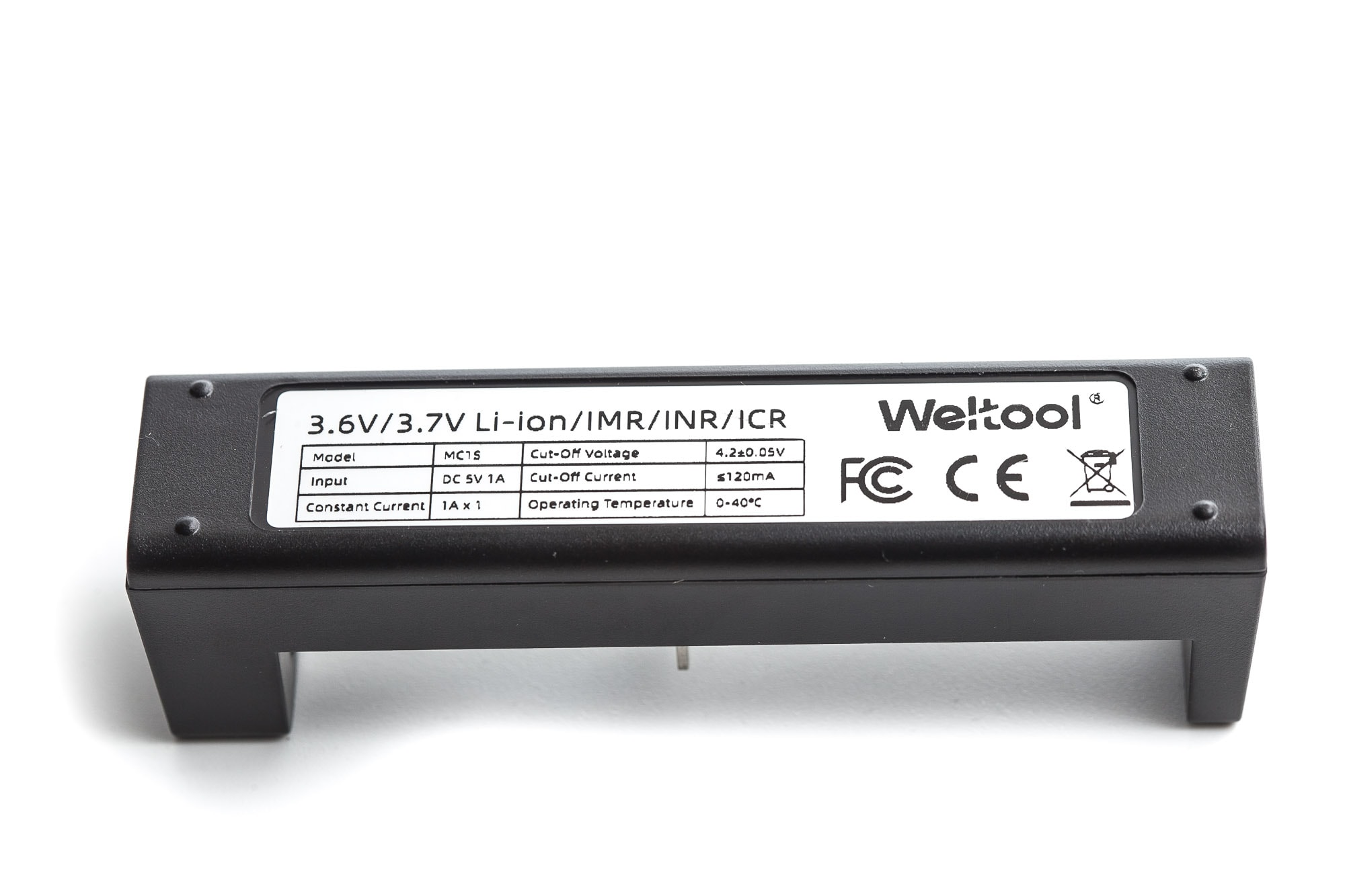
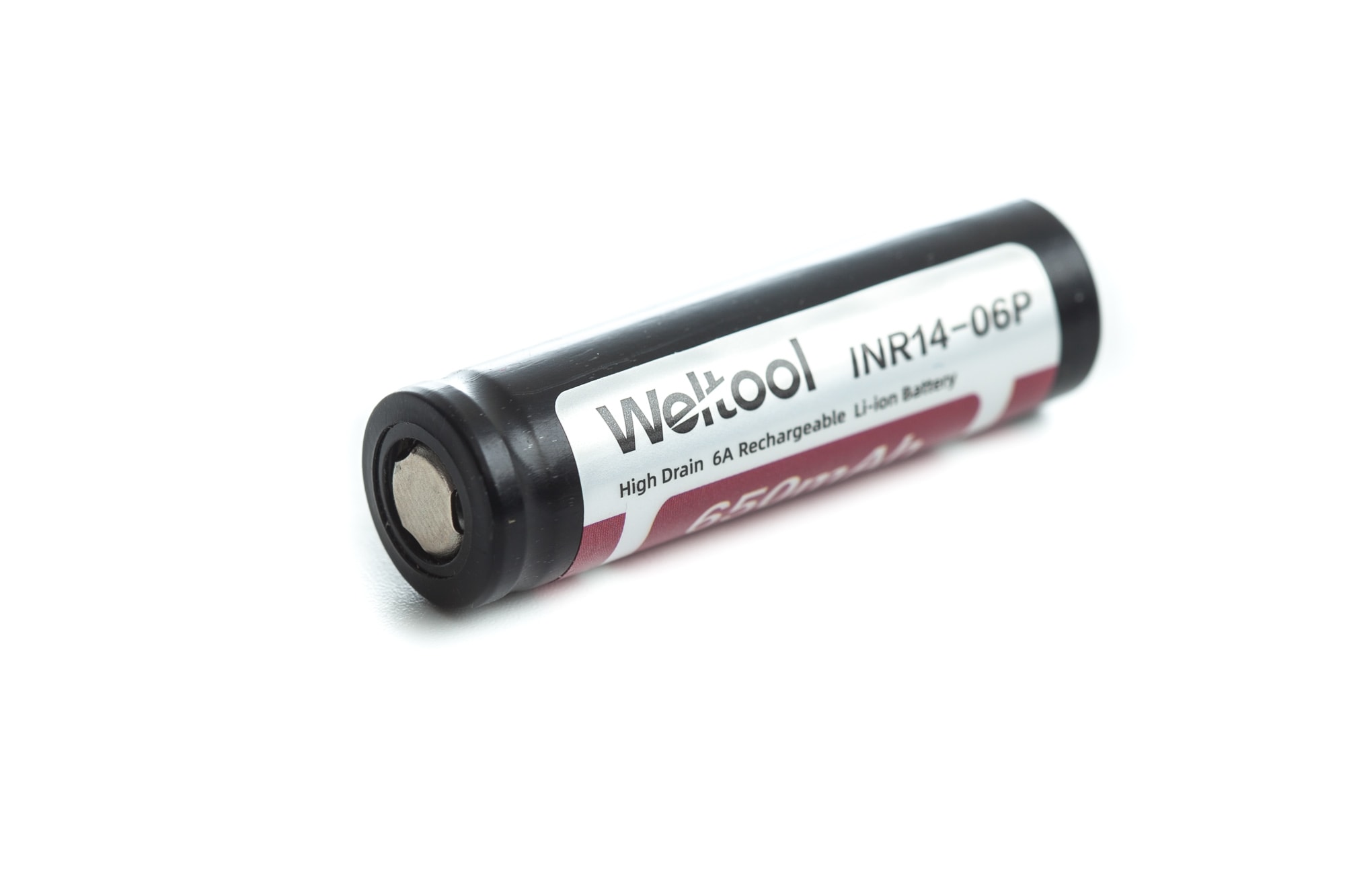
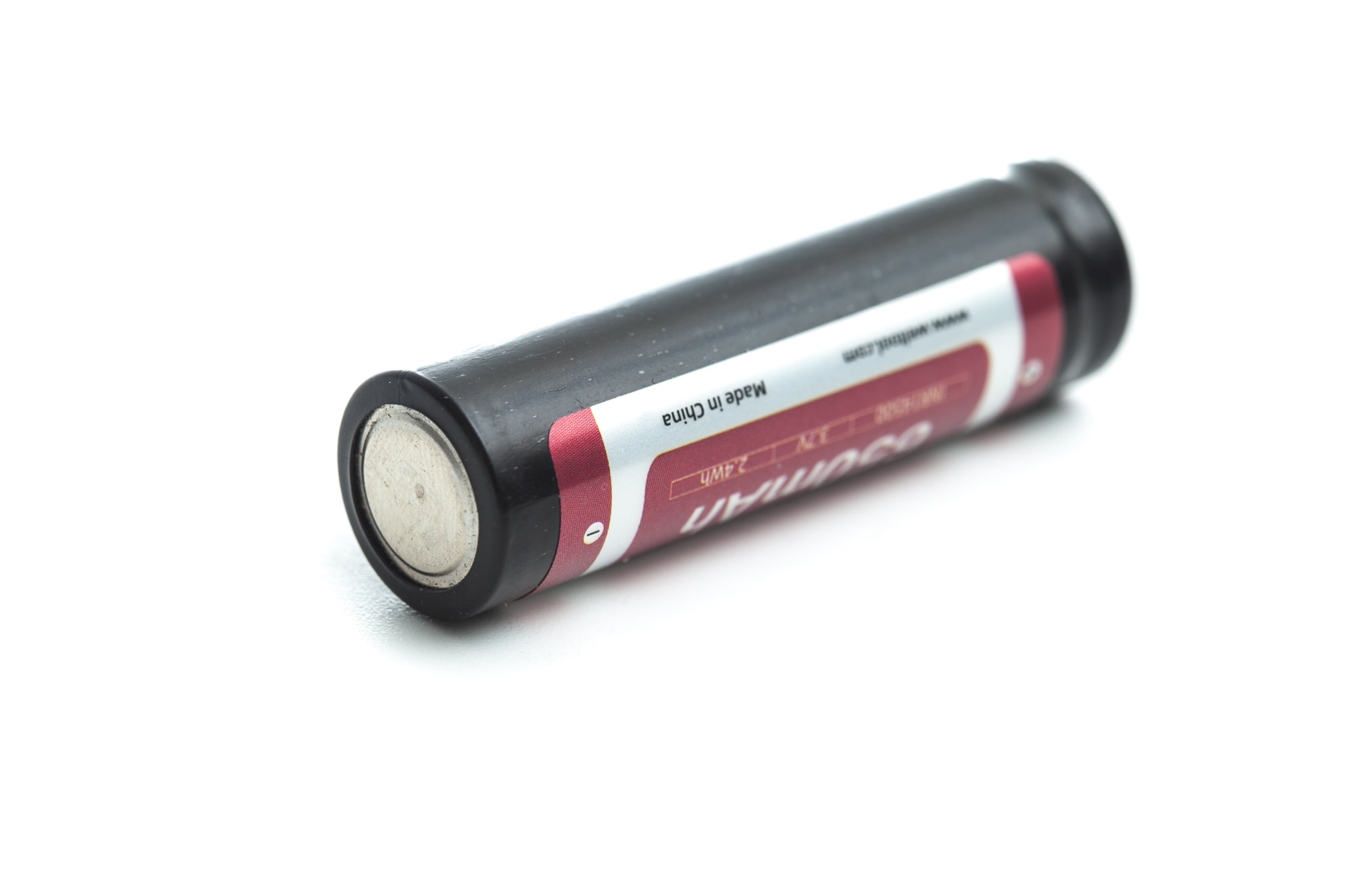
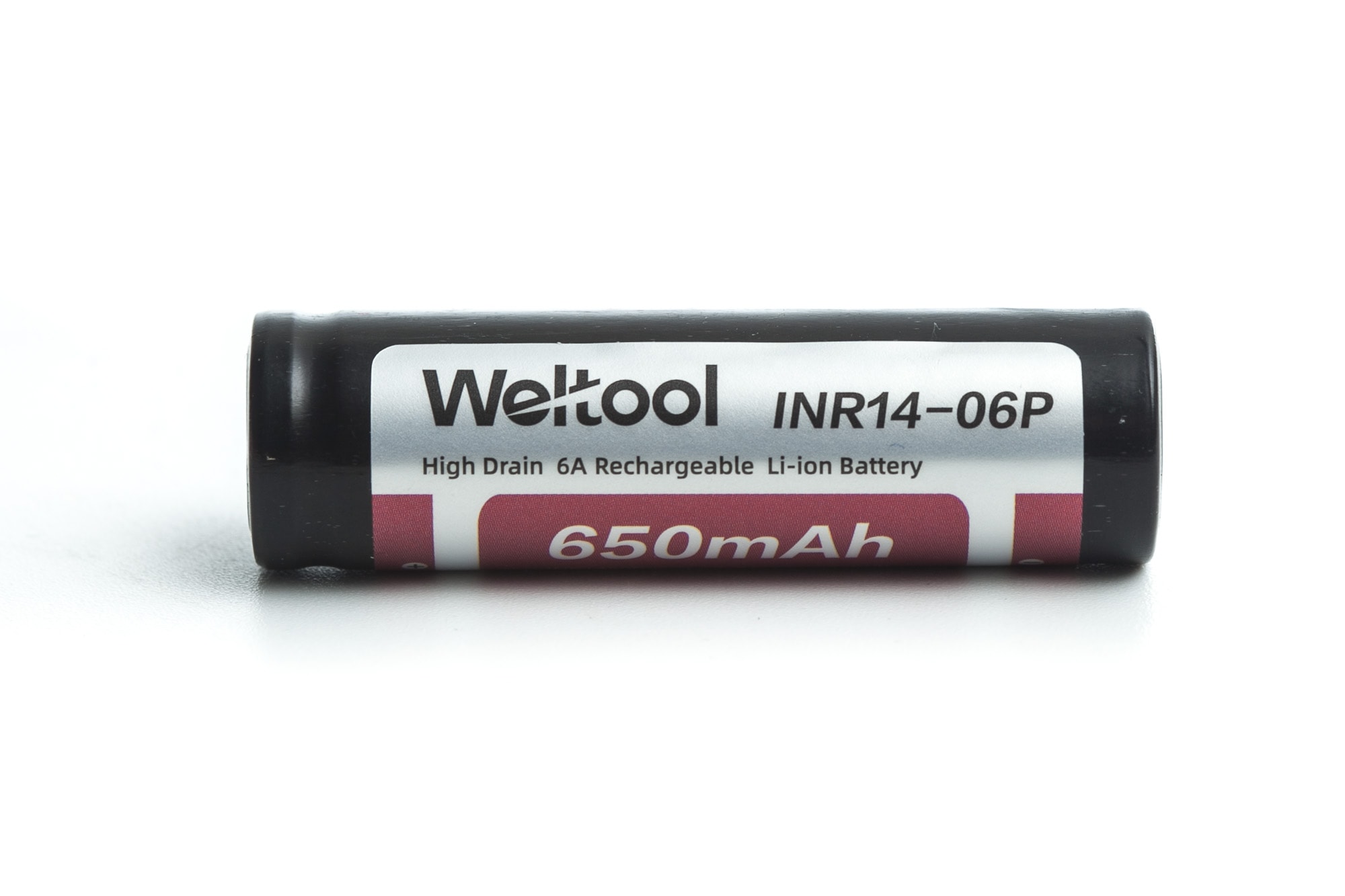
Performance test
This is the gear I use for testing:
| Gear | Purpose | Link to buy |
|---|---|---|
| Hagner E4-X | Measuring beam intensity (throw) | Inquire at Hagner.se |
| 2* Extech SDL400 | Lumens and logging runtimes | Amazon.com, Amazon.co.uk, |
| Leica Disto D2 | Distance for throw measurements | Amazon.com, Amazon.co.uk, |
| Sekonic C-800 | Spectrometer for LED measurements | Amazon.com, Amazon.co.uk |
| Uni-T UTi260B | Thermal Image camera | Amazon.com, |
Lumen measurements:
How Lumens are Measured: Understanding ANSI FL1 Standards How Lumens are Measured: Understanding ANSI FL1 Standards: The ANSI FL1 standards specify that output in lumens should be measured 30 seconds after turning on, as this is the standardized time for measuring brightness according to the industry standard. This is why we focus on this part in our measurements. The ANSI FL1 standards require an ambient temperature of 22 ± 3°C. We record the ambient the ambient temperature to identify potential reasons for any observed discrepancies.The output measurements in this review are based on my homemade integrating spheres, each equipped with an Extech SDL400 Lux Meter. For consistency and accuracy, a calibration light (Convoy S2+ with 249lm and a Convoy S2+ with 261lm) is measured before each set of lumen measurements.
One of the lux meters uses an ND camera filter for high-output lights to prevent the lux meter from maxing out. This is either the Kenko PRO1D ND16 for up to about 80,000 lumens or the Gobe ND32 for anything above.
All of my readings were taken from a fully-charged Weltool INR14-06P.
The measurements were taken manually at turn on and 30 seconds. The 10-minute numbers are taken from the runtime graph.
| Mode | Specified | At turn on | 30 sec | 10min |
|---|---|---|---|---|
| On | 280 lm | 297 lm | 304 lm | 64 lm |
You notice that the output increases from turn on.
Ambient temperature during testing:
- 18.8 degrees Celsius
Weltool W2 Battery life and runtime
How Runtimes are Measured: Understanding ANSI FL1 Standards About ANSI FL1 runtime standards: The runtime is measured until the light drops to 10% of its initial output (30 seconds after turning on). This does not mean that the flashlight is not usable anymore. The last column shows how long the light actually works till it shuts off. If there is a + symbol, it means that the test was stopped at that particular point, but the light was actually still running. This happens on certain occasions, with certain drivers, firmware, or batteries.Runtime tests were conducted in my 50cm homemade integrating sphere, paired with the Extech SDL400 data logging Lux Meter. Temperatures from the moment the runtime test started.
| Mode | Specified | Runtime (ANSI FL1) | Time till shut off |
|---|---|---|---|
| High (18.6°C) | 42min | 40 min | 40 min |
After the runtime, the battery was down to 2.84V.
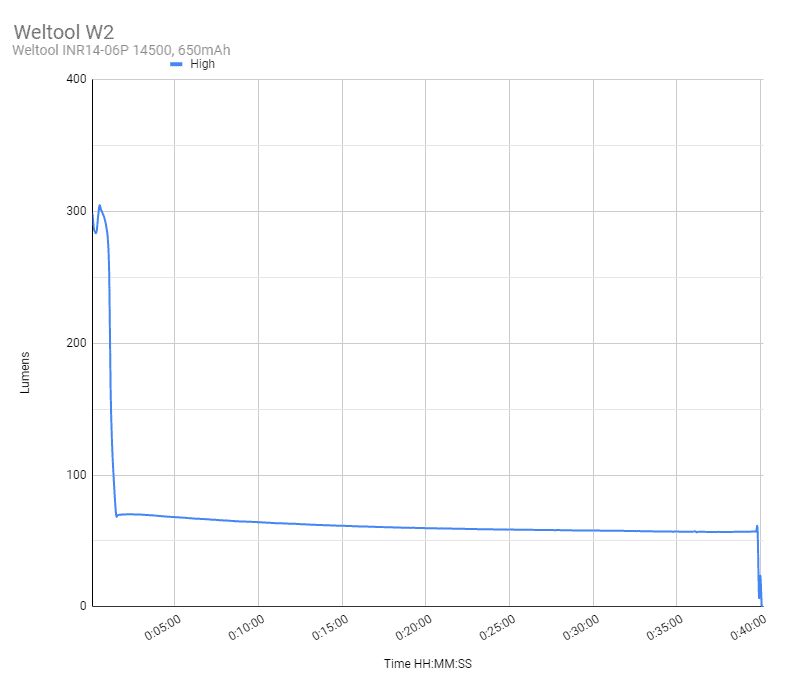
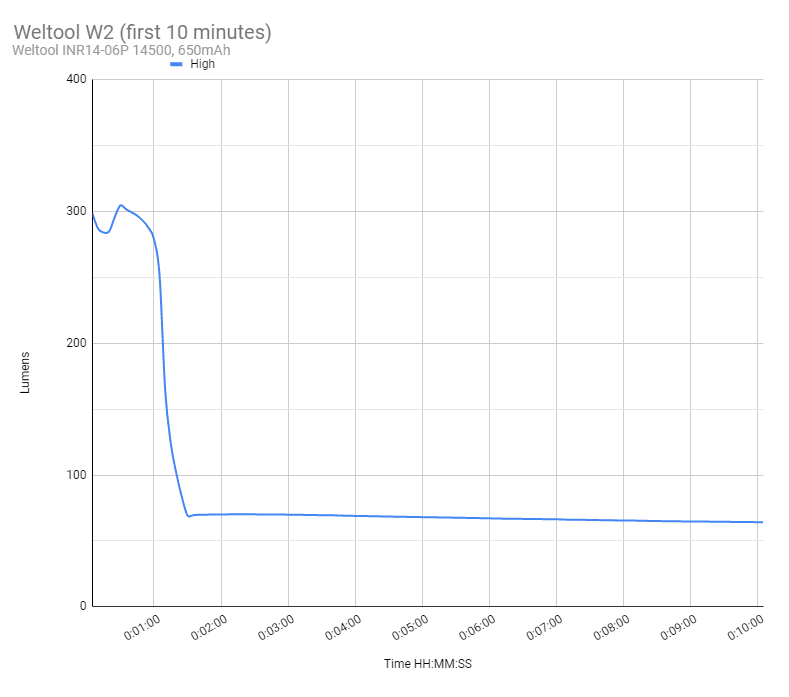
Weltool W2 vs Lumintop Ant Man
Compared in candelas
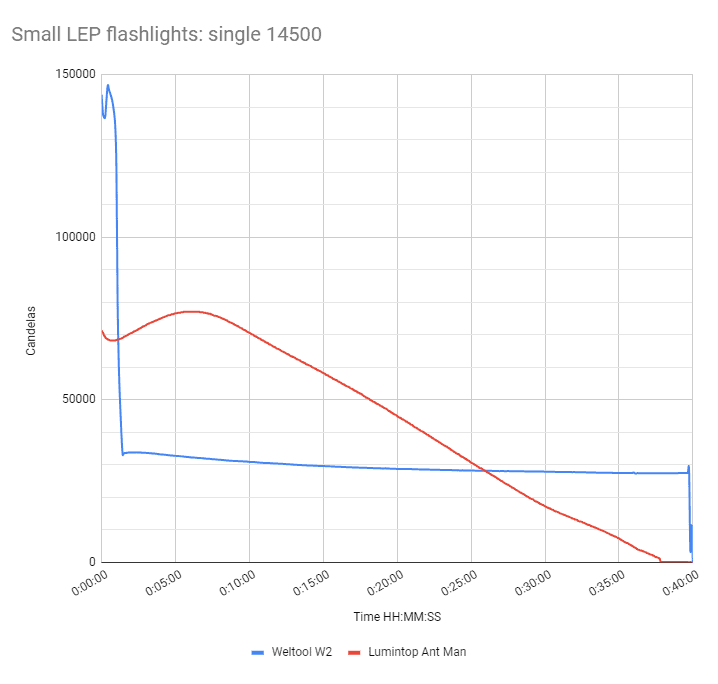
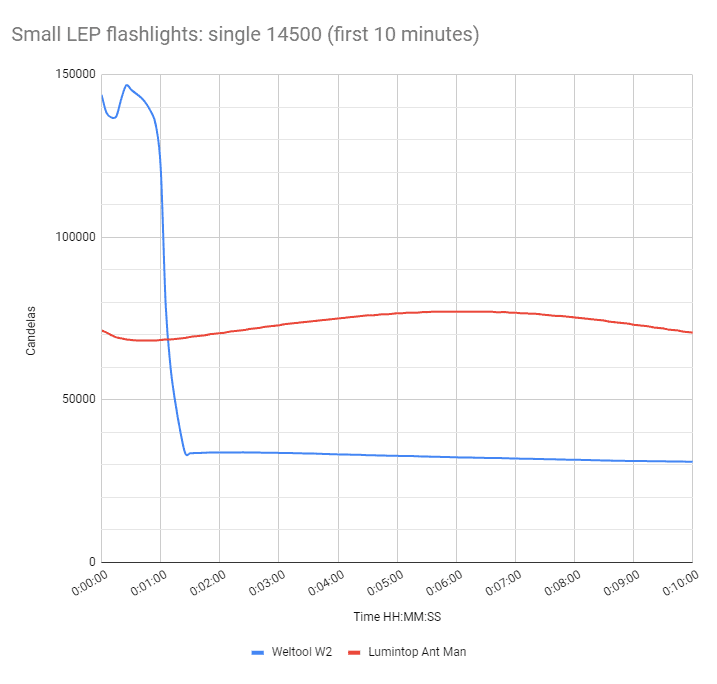
It’s interesting to note that the Ant Man starts off low, and then after about 1 minute surpasses the W2.
Weltool W2 Peak beam intensity and beam distance measurements
About Peak beam intensity: Understanding ANSI FL1 Standards About peak beam intensity The calculated value of distance in meters at which the flashlight produces a light intensity of 0.25 lux. (0.25 lux is about the brightness of a full moon shining on an object). This means that the intensity has decreased so much, it becomes difficult to see darker objects, or objects that don’t reflect light. The columns ‘Meters’ and ‘Yards’ use rounded numbers.Measurements were taken indoors at 5 meters with a Hagner E4-X Lux Meter. The measurements were taken 30 seconds after turn on. I also tested it outdoors at 20 meters, in the cold, at around 0 degrees.
| Mode | specified | measured | meters | yards |
|---|---|---|---|---|
| High / On (5 meters indoors) | 160,000 cd | 146,750 cd | 766 | 838 |
| High / On (20 meters outdoors) | 160,000 cd | 132,000 cd | 727 | 795 |
Ambient temperature during testing:
- Indoors: 18.8 degrees Celsius, outdoors 0 degrees Celsius.
Beamshots
For the tower beamshot, I used a Canon EOS 5D mk2 with a 100mm lens. Manual settings: ISO1600, 0.5sec, F4, 5000K. The tower is about 450 meters / 492 yards away. For the shed and reflective fence , I used a Canon EOS 5D Mk2 with a 50mm lens. Manual settings: ISO1600, 1/4sec, F4, 5000K. The shed is about 65 meters / 71 yards away, and the reflective fence is about 200 meters.
Explore and compare the beamshots from the following flashlights:
- Weltool W2
- Lumintop Ant Man
- Lumintop Thor Mini
- Manker E05
Please note that the following beamshots are mainly intended to showcase the beam pattern and beam quality, rather than overall performance. These images are typically taken directly after activation, and in different seasons or weather conditions, and therefore do not fully represent its overall performance. For accurate performance metrics, such as output, beam distance, and runtimes, you need to look at the performance section of this review.
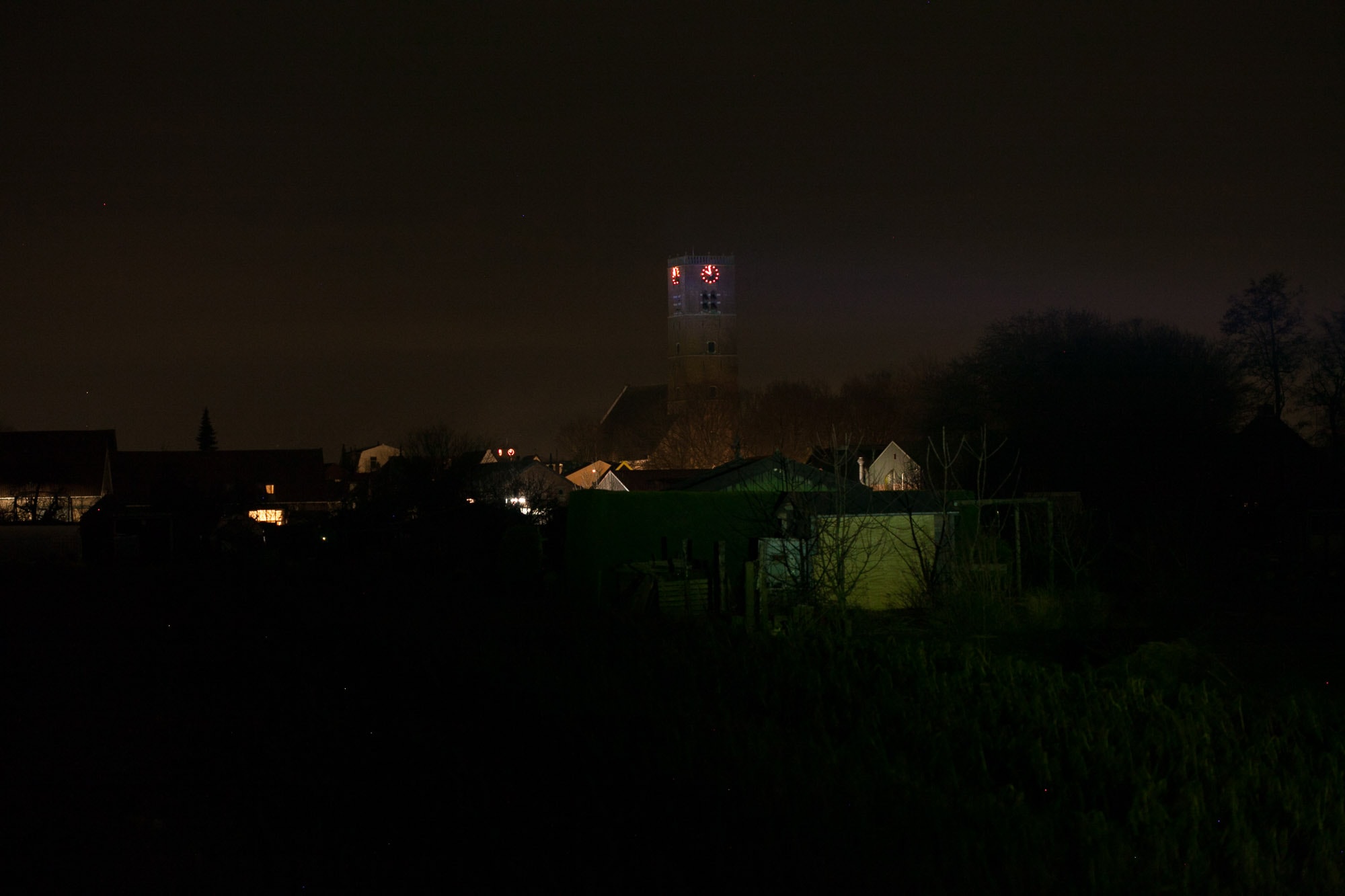
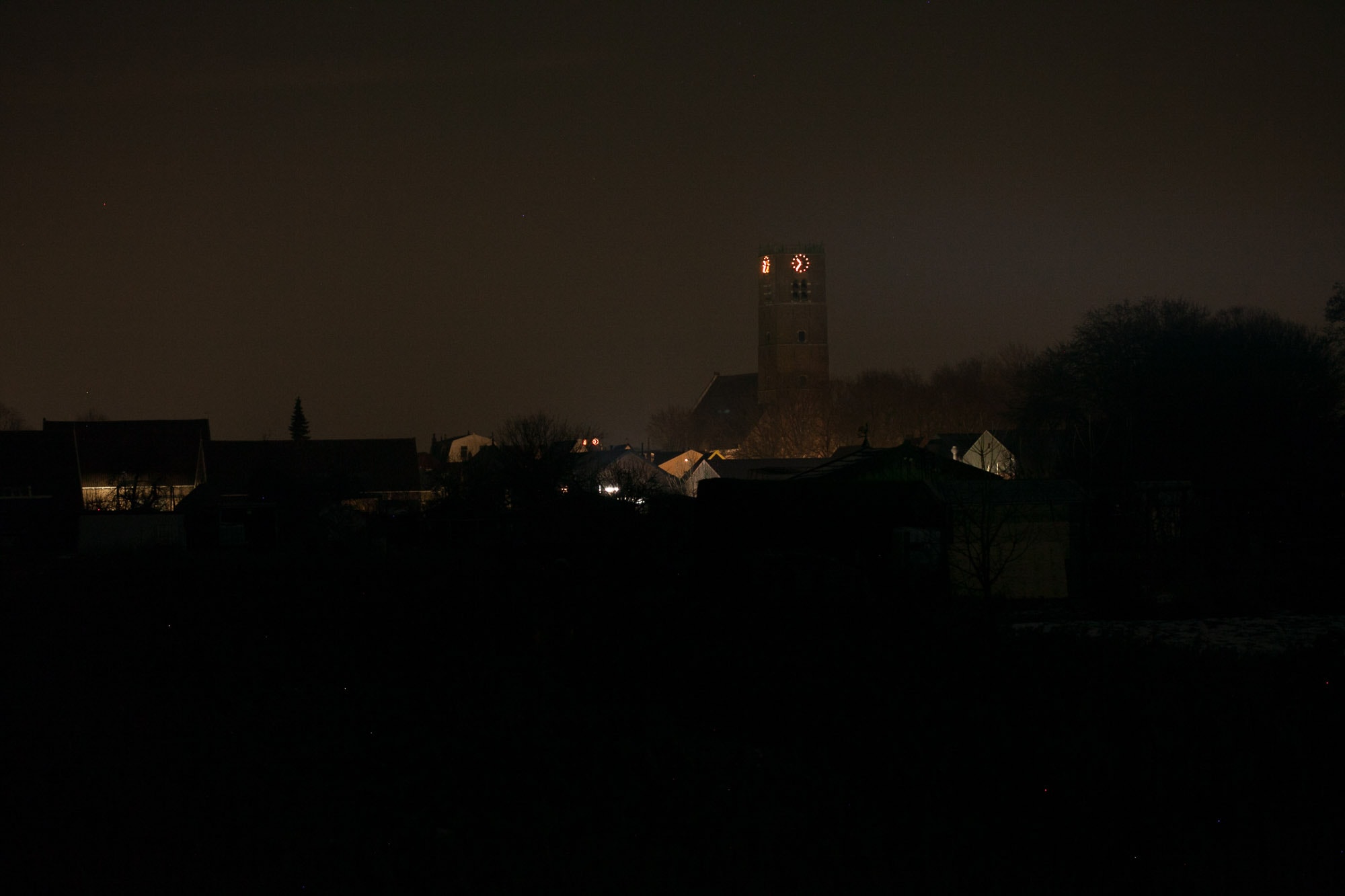
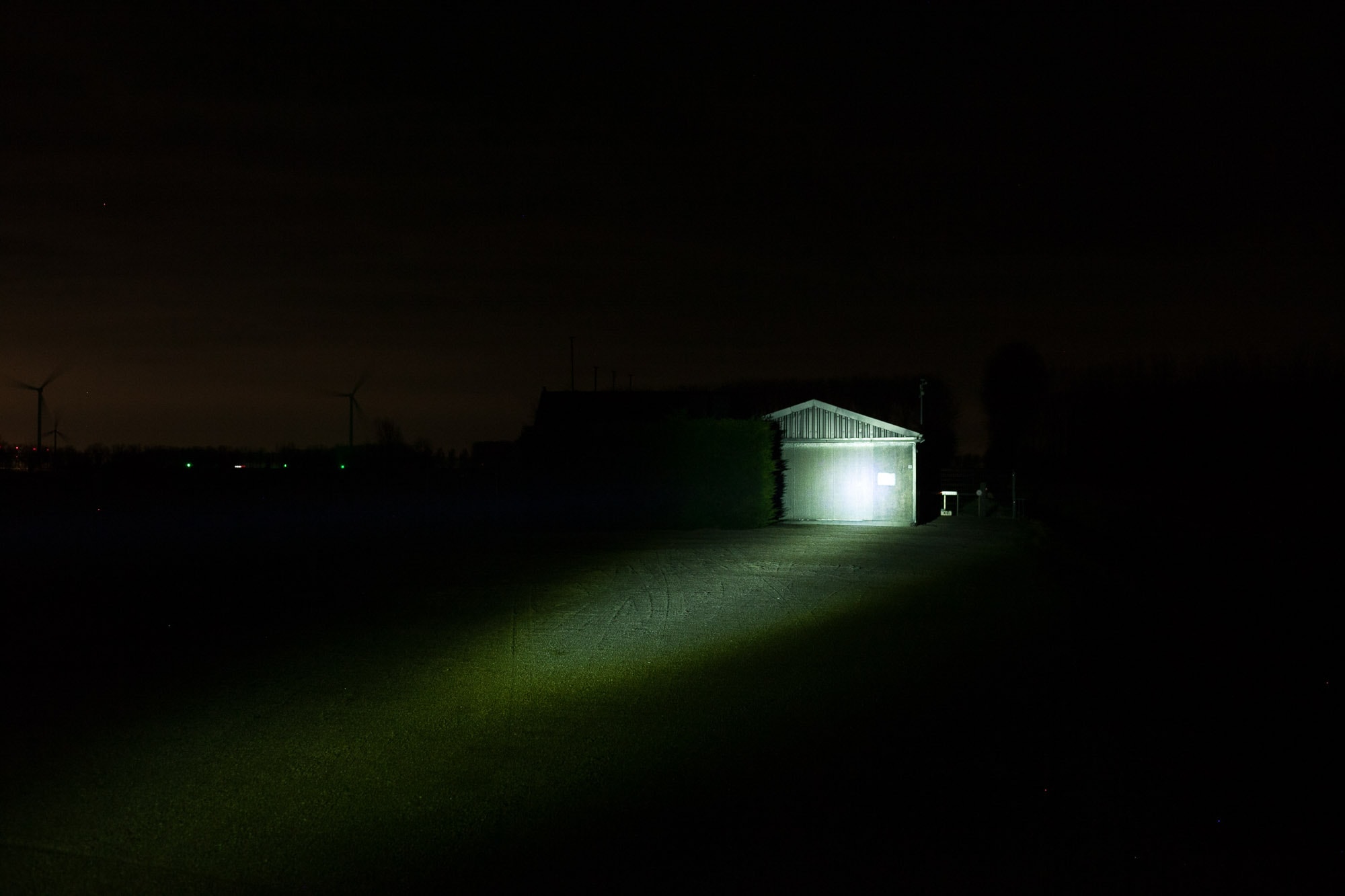
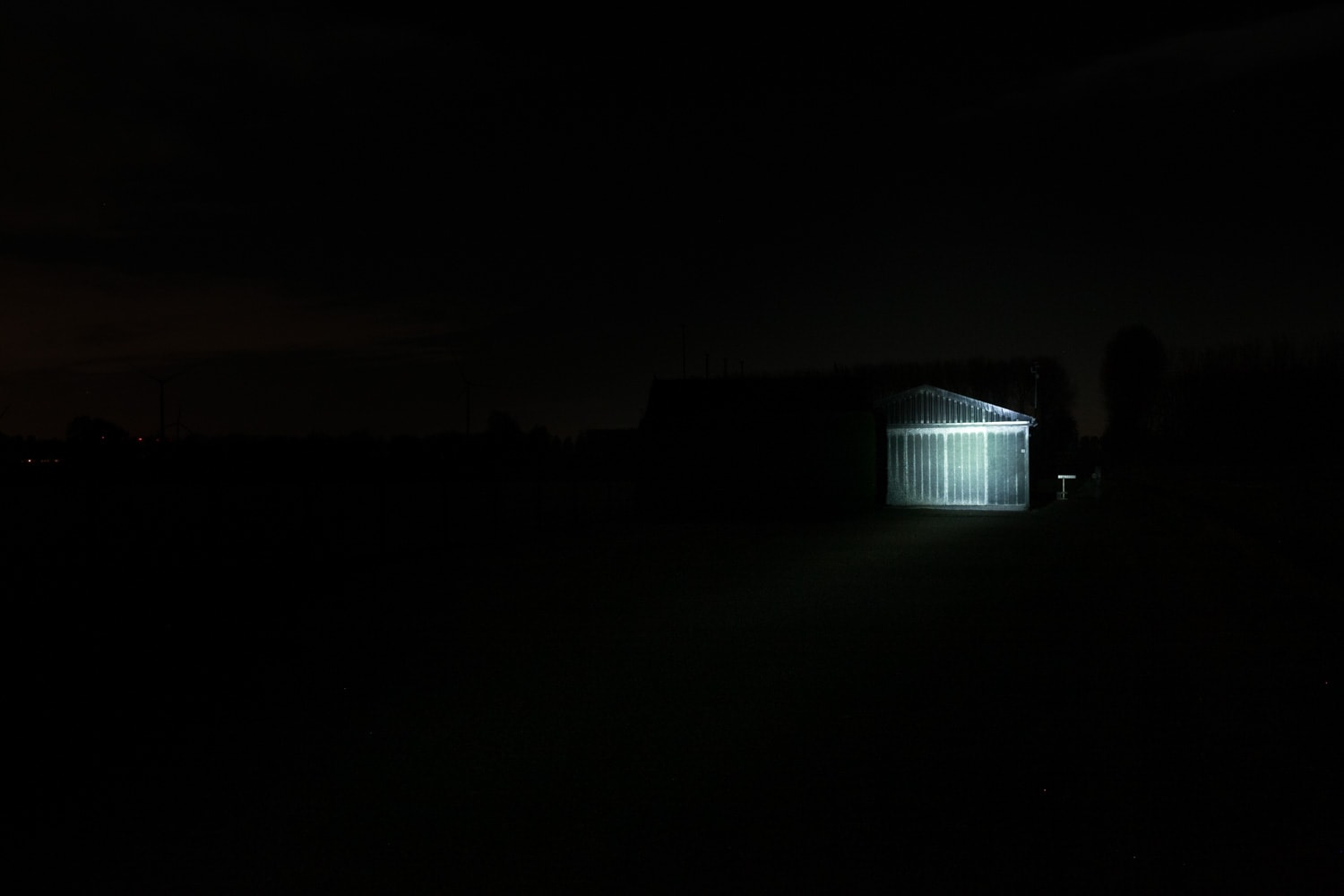
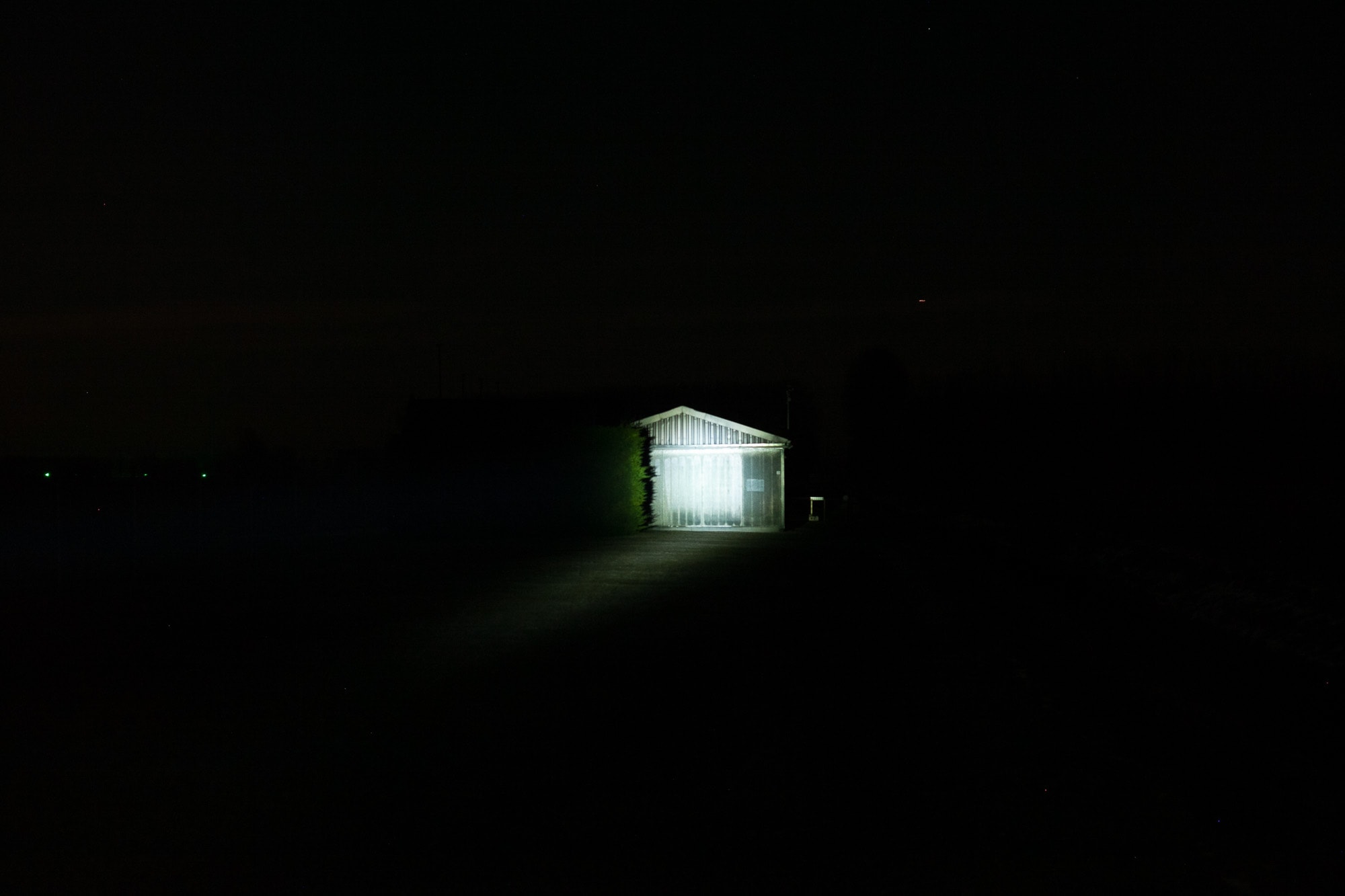
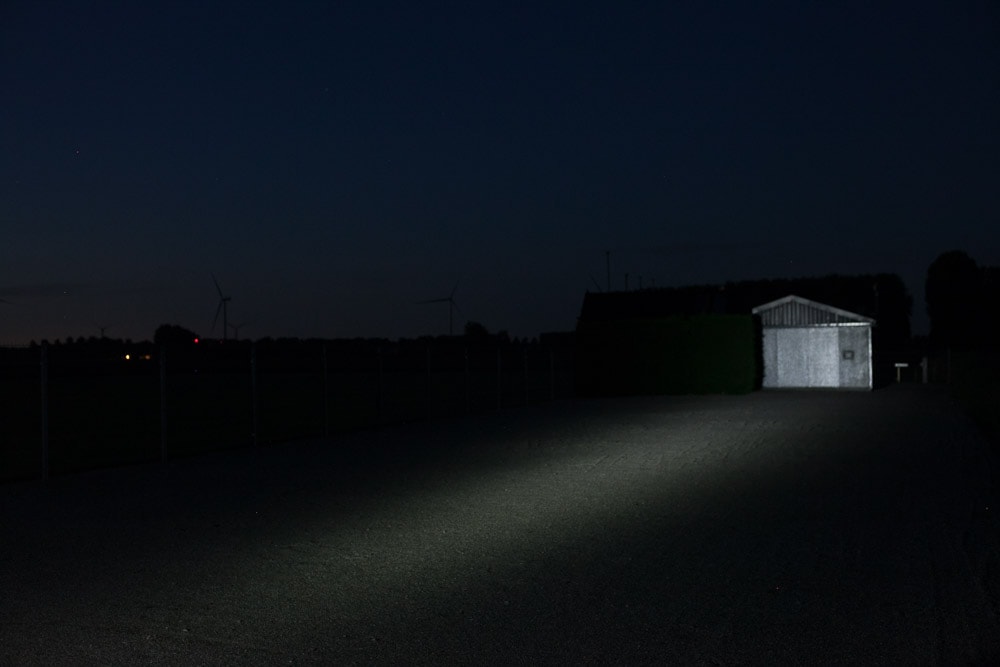
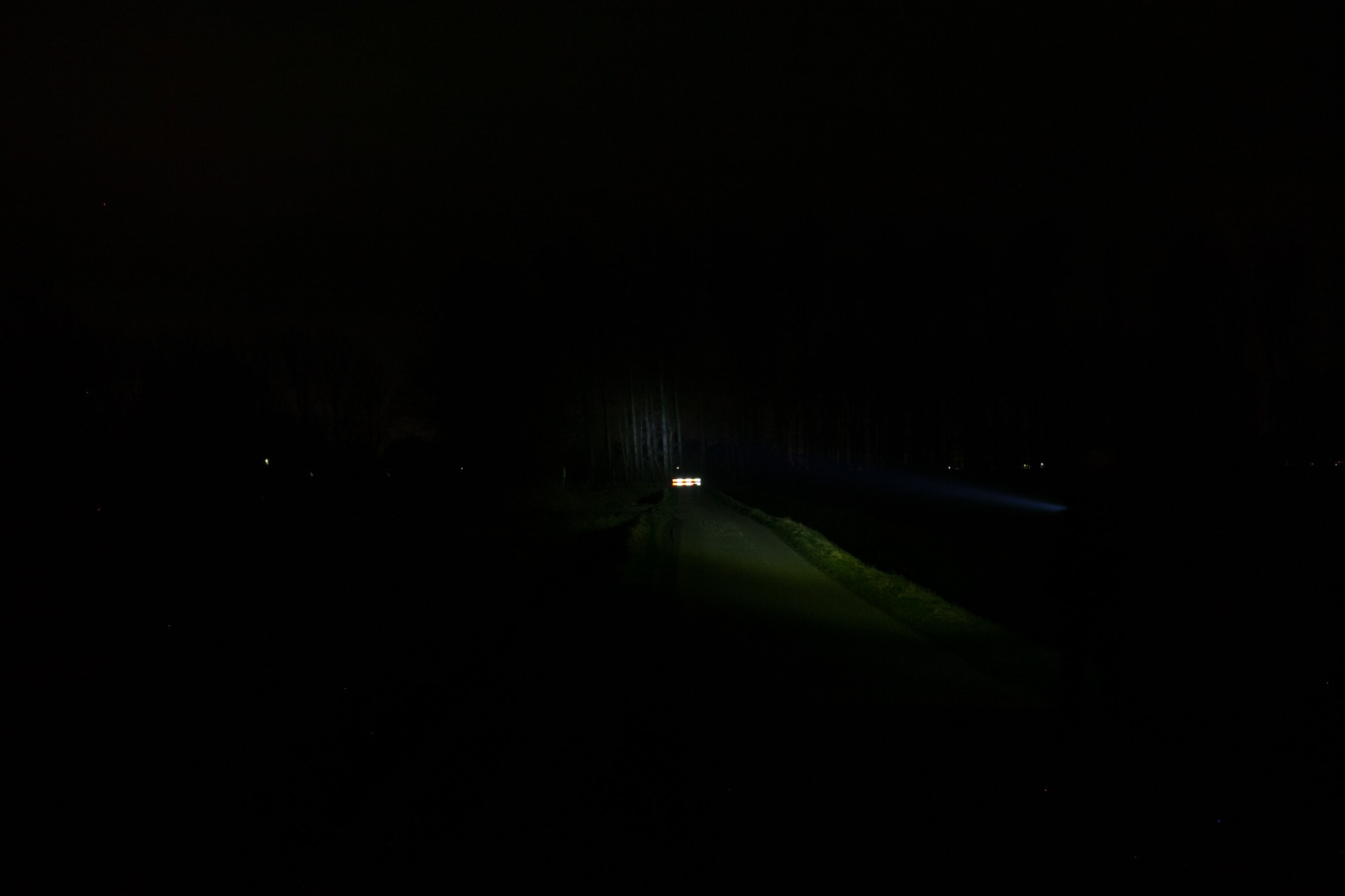
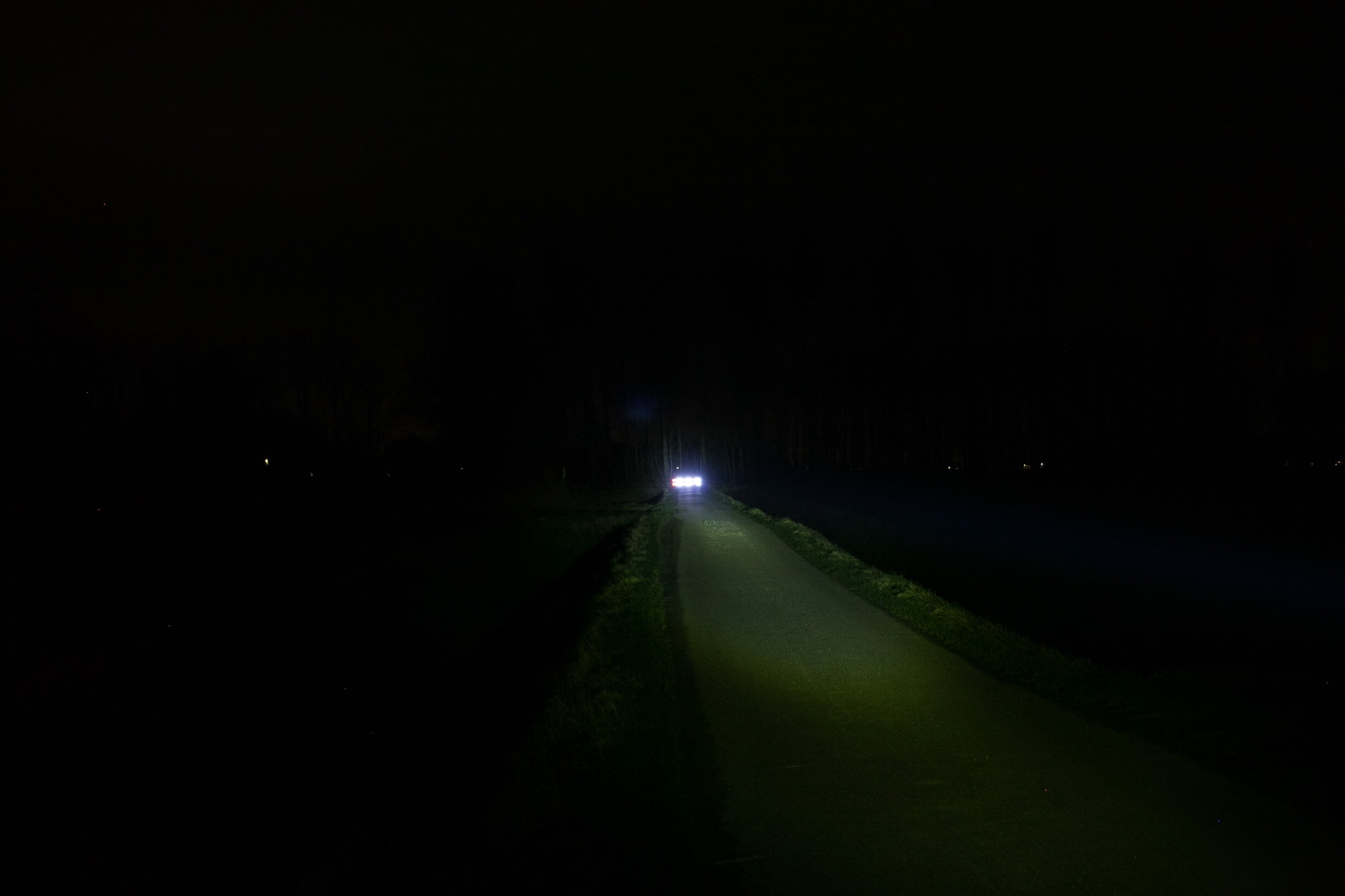
Disclaimer: This flashlight was sent to us for review at no cost by Weltool. We have not been paid to review, nor have we been holding back on problems or defects.
Final Verdict
Pros
- The first 14500 SMD laser flashlight
- Great throw for its size
- Small, due to 14500 battery
- Nice build quality
- Comes with battery and charger
Cons
- Beam looks green outside the hotspot
- Hotspot looks purple/blue
- Because of the new technology, it is still pricey
- No protecting lens in front of the convex lens
Explanation on star ratings:
1: Avoid: my phone flashlight would be a better choice – 2: Poor: significant defect or issues; almost unusable – 3: Average: some defects or issues; but still usable 4: Good: recommended (minor issues) – 5: Great: highly recommended

3.5-4 stars: ★★★★?
While our star rating provides a reliable indicator, we encourage you to read the full review to make an informed decision based on your own needs and preferences.
The Weltool W2 is a pretty unique lashlight. It’s the first SMD LEP flashlight available worldwide. Instead of using an LEP module (either a shine-through module or a mirror-type module), it uses an SMD laser chip on top of an MCPCB. This is such an improvement because you could basically turn a normal LED flashlight into an LEP with the right convex lens.
For its size, it throws very well, and I’m quite impressed with that because mine had double the number of candelas compared to the Lumintop Ant Man, which is also a 14500 LEP flashlight. The build quality is top-notch, and it feels very nice in hand.
The price is a little steep (because of this new technology) for such a small flashlight. The beam has a greenish spill and a purple center, but I am sure Weltool will be working to improve this and get a nicer beam in the next generation.
No, it’s not the best overall performer, and no, it’s not cheap. But if you’re into flashlights, and excited about new flashlight technologies, this is something very unique, and possibly shaping the next generation of flashlights.
Buy your Weltool W2 here
1lumen selects and reviews products personally. We may earn affiliate commissions through our links, which help support our testing.